2021 white harvest at Bauduc – September review
Posted by Gavin Quinney on 30th Sep 2021
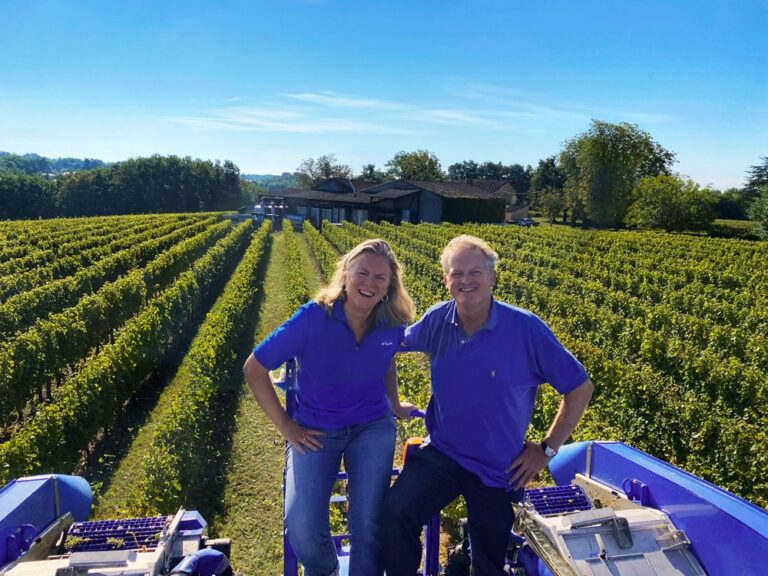
Not so much of a ‘long read’, more of a lengthy scroll. Our photo journal this month not surprisingly covers our harvest – or rather, the white half. The theme of Clarkson’s farm from our August missive continues: click here if you missed that exciting newsletter.
If you’re looking for wine supplies in Great Britain, look no further than bauduc.com and use the seasonal loyalty code Harvest21 for 10% off until 21 October. For elsewhere, please contact us below.
It’s a gorgeous day today and perfect for bringing in the reds for making rosé: Merlot, Cabernet Franc and Cabernet Sauvignon, in our case. Below is the latest on our Crémant, Sauvignon Blanc and Sémillon 2021.
Feel free to comment or question on the blog post via Gavin's blog. We’ve turned ‘comments’ back on after ditching them years ago due to spam overload. We think we may have fixed that.
There’s a nifty little ‘comment’ icon to the side of the post, making it easy to find the right place and with the least fuss, we hope.
All the best
Gavin & Angela Quinney
PS To view just the images in 'photo albums', click here.'
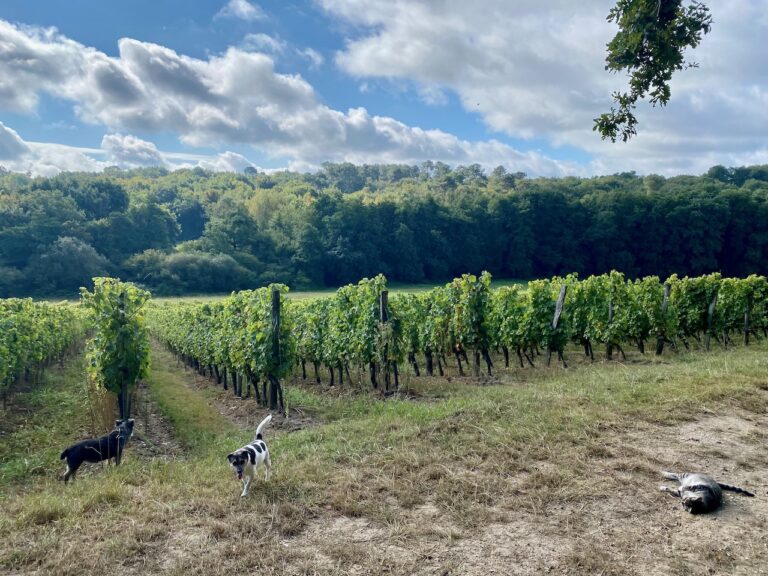
We were reasonably relaxed in the earlier part of the month as we waited for the grapes to ripen, though not quite as much as the cat. (10 September.)
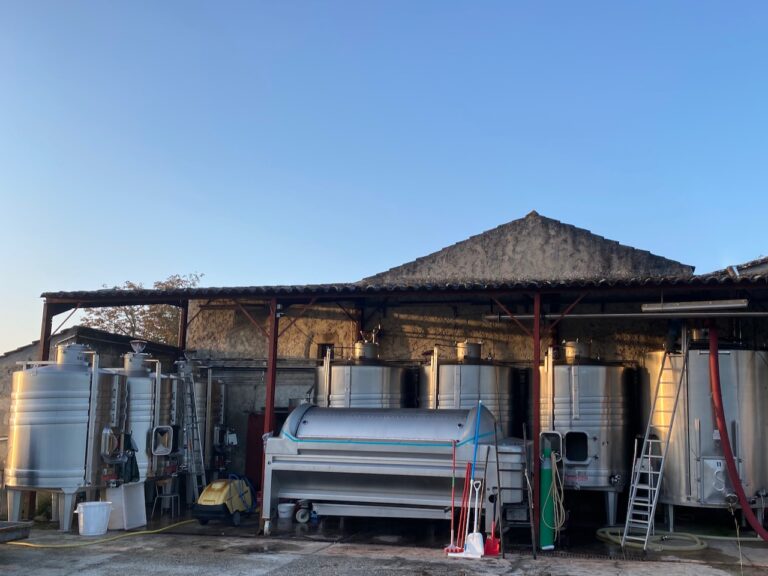
Our six new secondhand stainless steel tanks – if that makes sense – were all in place, having been delivered and installed last month.
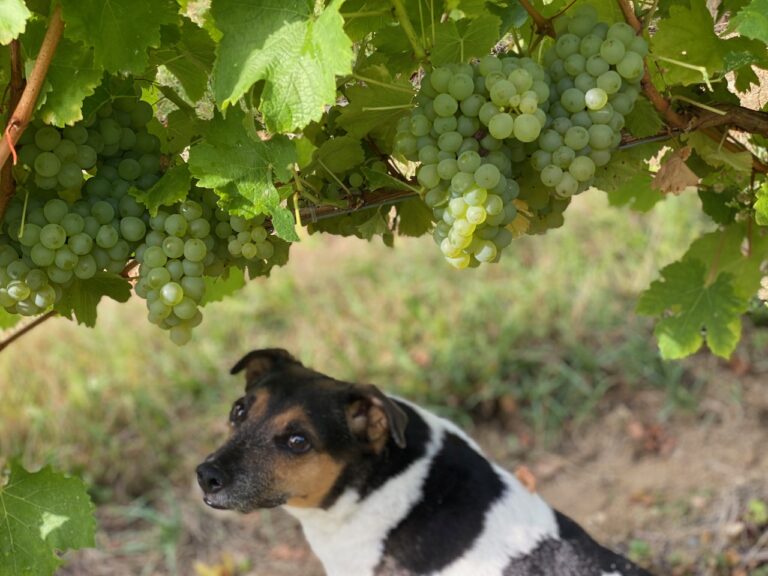
The main anxiety was keeping an eye on the weather forecast, as ever, with the risk of mould or rot setting in before the grapes had ripened properly.
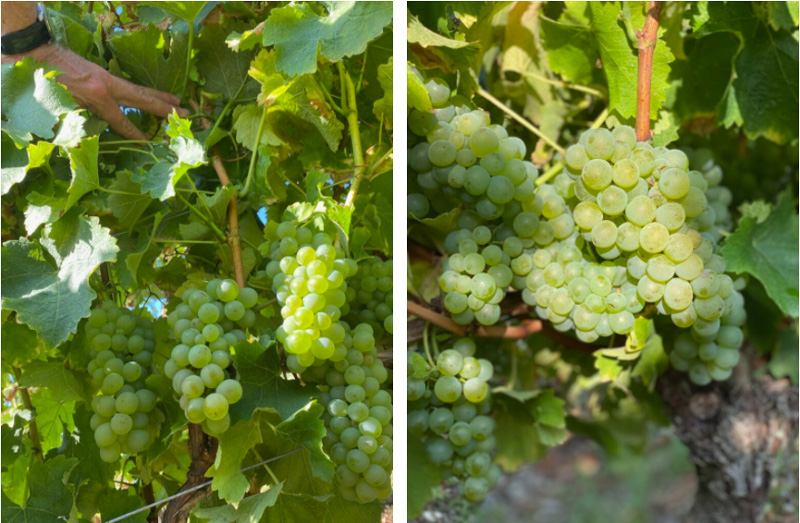
You might have read that the 2021 harvest across France is heading for a disastrous crop in some areas. Our Sauvignon Blanc hadn’t read the script, thankfully. (8 September.)
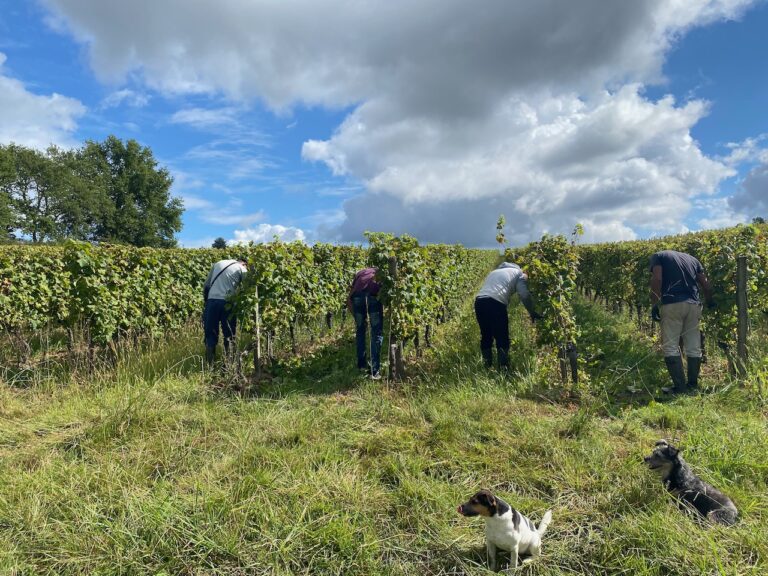
The first grapes to be picked are always our Sémillon for making our Crémant, or sparkling white wine. Having made the call to harvest the week beginning Monday 13 September, I thought it would be a good shout to pull the leaves away from the bunches the Friday and Saturday before.
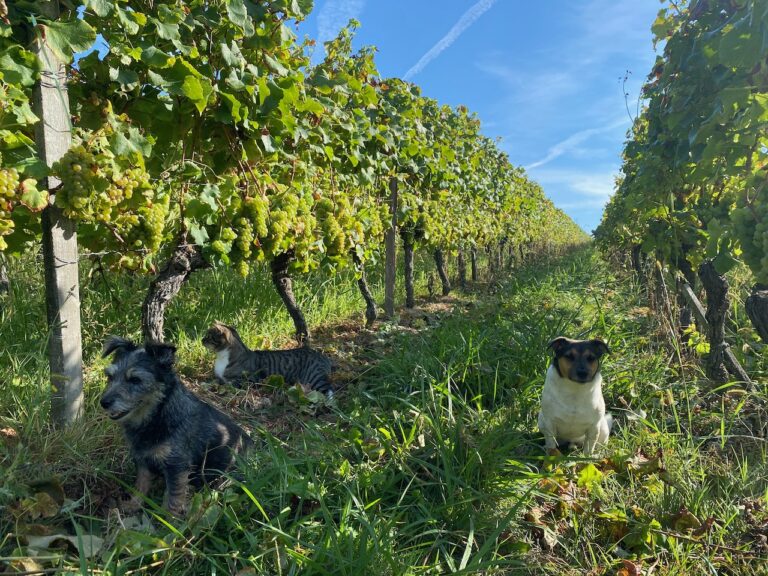
I wanted the pickers to be able to snip the bunches off quickly and to spot any mould-affected grapes.
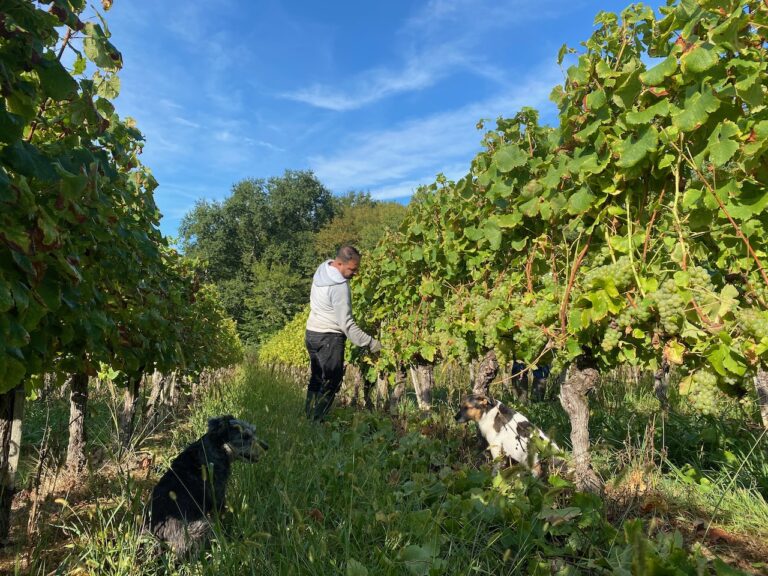
There was less rot on the bunches than I thought but by exposing the grapes to the sun and breeze it should have put the brakes on any spread of ‘botrytis’.
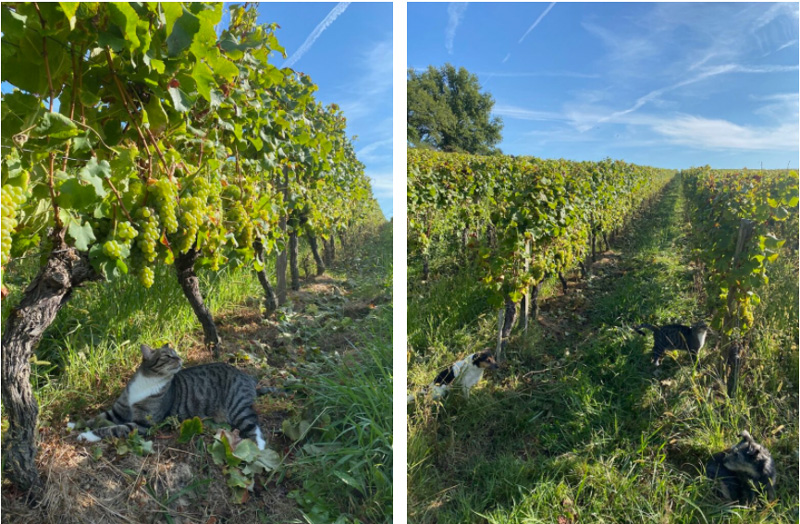
All rather relaxing given the harvest is imminent.
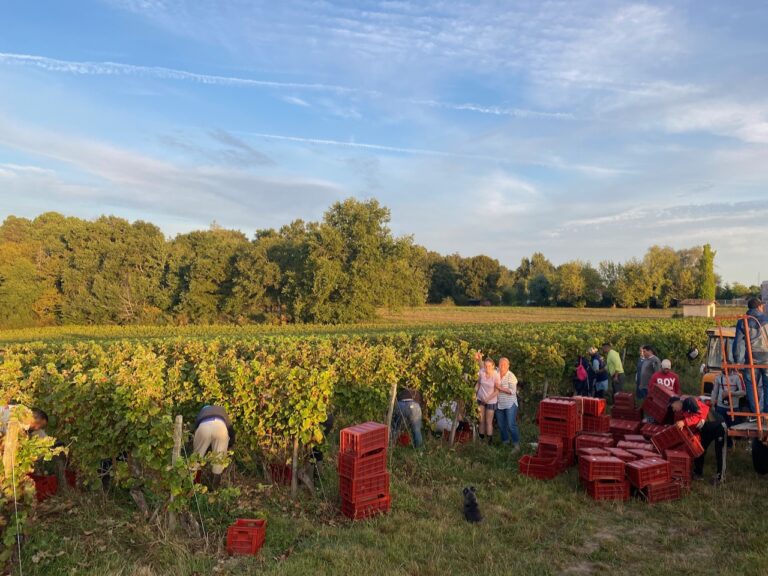
Sophie and Ange on the first day of the harvest, Monday 13 September.
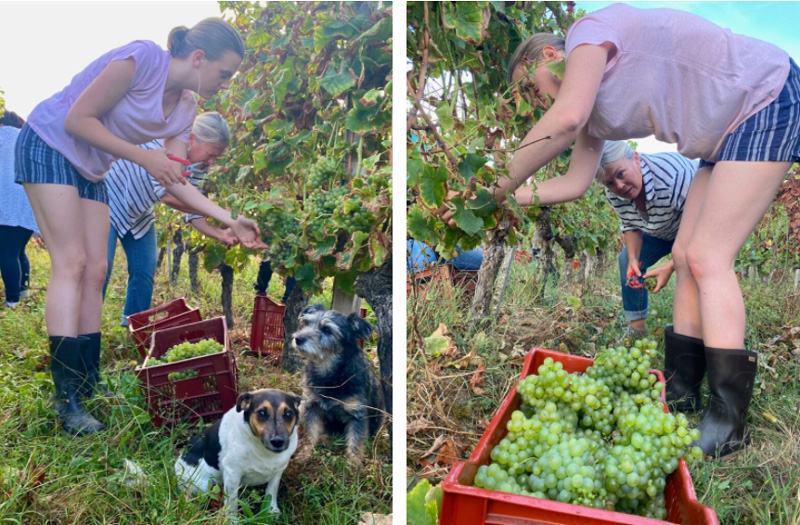
Soph and Ange with a healthy crop of Sémillon for the Crémant – Sophie has helped to pick this plot since our first crémant vintage in 2014. The grapes have to be manually harvested and placed in stackable crates so as not to crush the bunches. It’s all part of the crémant rule book.
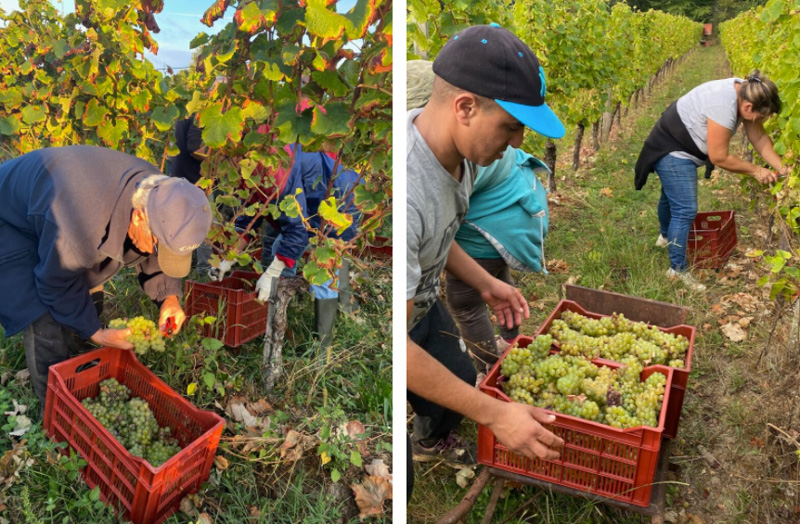
Any rot or mould can be cut out easily enough. On the right is Sandra who works in the vines all year round.
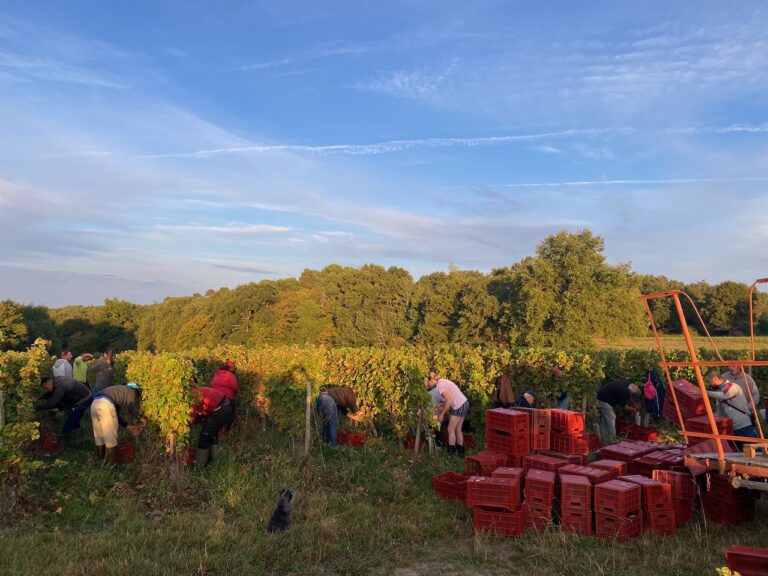
An early kick off with the sun just coming up. (8am here is 7am in the UK.)
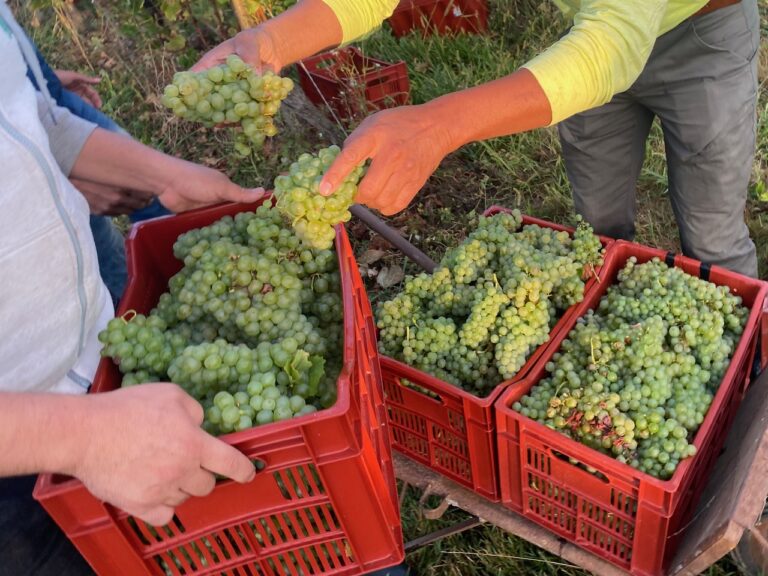
For making sparkling wine in the traditional method, you need grapes that aren’t too high in sugar and have plenty of acidity.
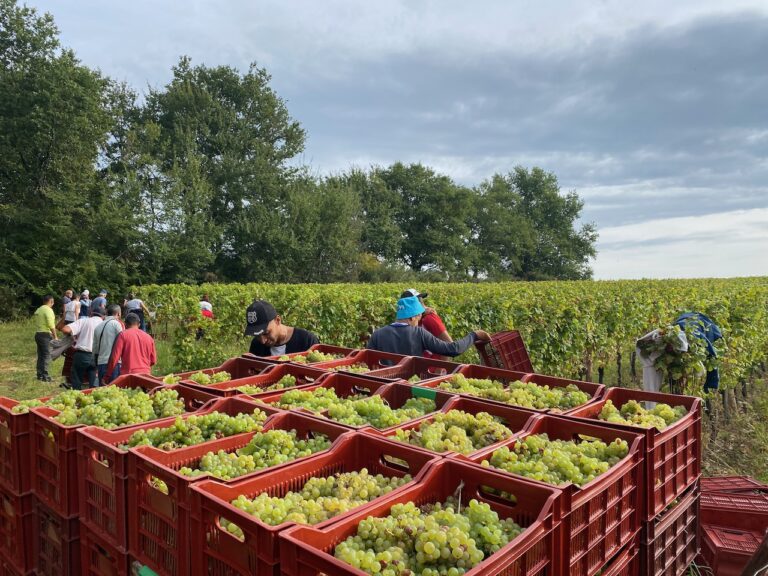
Sémillon is an underrated grape: it can make crémant, when picked reasonably early as here, or excellent dry white wine (Château La Mission Haut Brion blanc is made mostly from Sémillon, for example), or amazing sweet white wine in Sauternes, such as at Château d’Yquem.
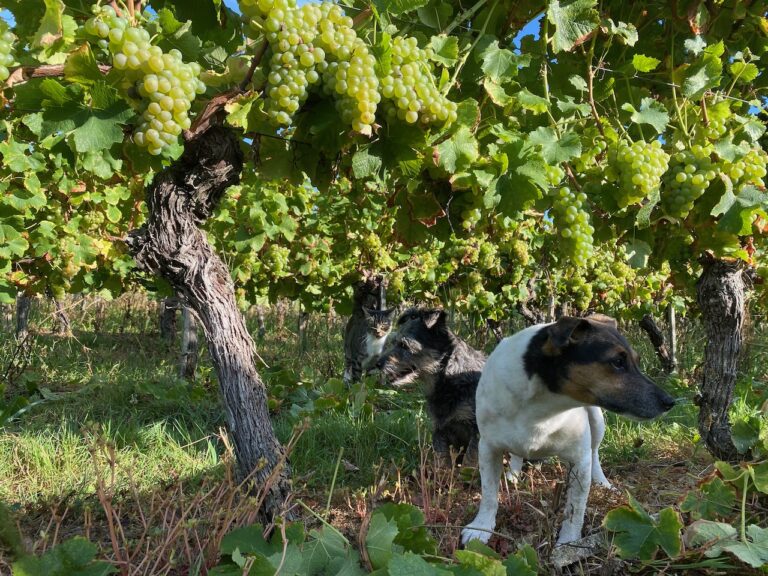
The three musketeers. Goose, Margaux and Pavie.
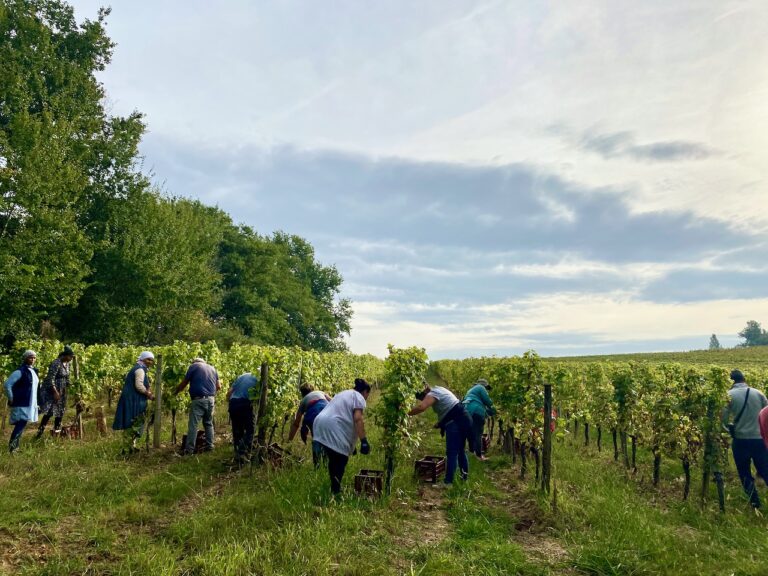
We planted this block in 2004, so these teenage vines are still young and vigorous.
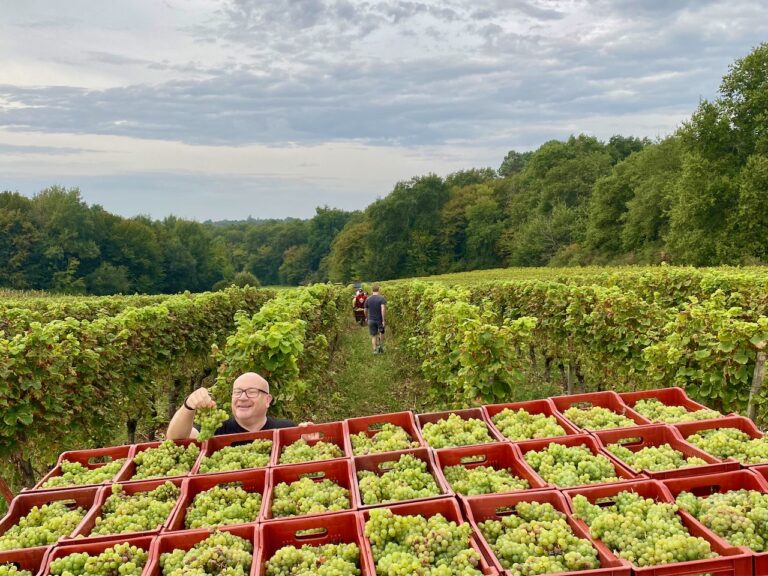
Our great mate Ronan Sayburn came to stay for the start of the harvest – here he is providing, um, invaluable quality control. Ronan was the head sommelier for Gordon Ramsay when he and Gordon selected Bauduc as the house wine some 20 years ago.
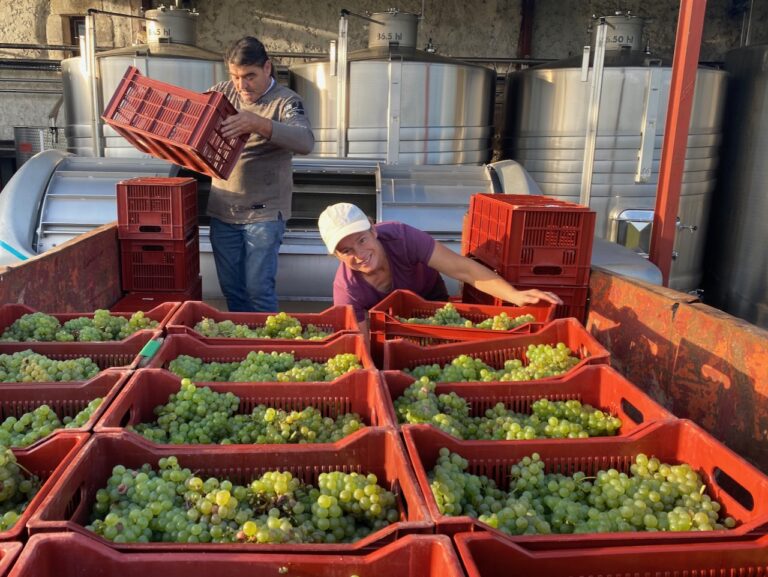
Daniel and Nelly putting the bunches into the press.
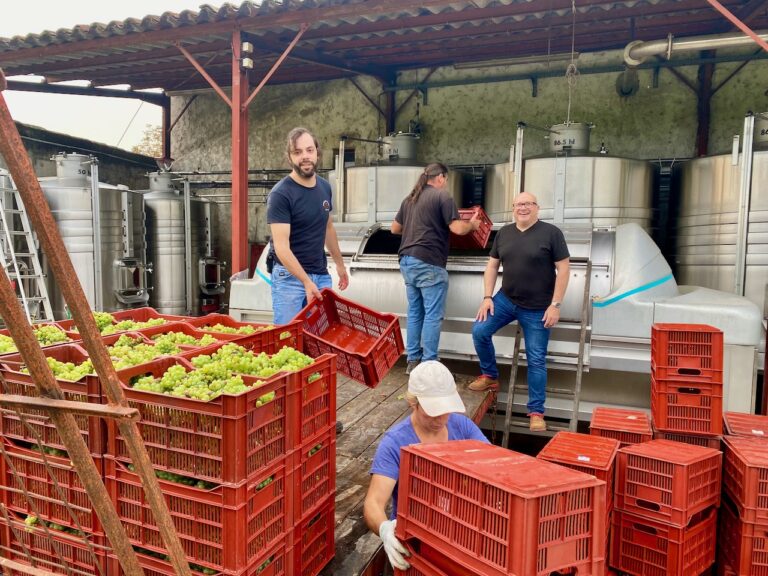
Ronan was, in fact, a great help in an unusual way. Shortly before the harvest, we realised belatedly that we needed some extra help in the winery, partly as our son Tom had recently got a job at a wedding venue nearby (Château Rigaud) and was enjoying it.
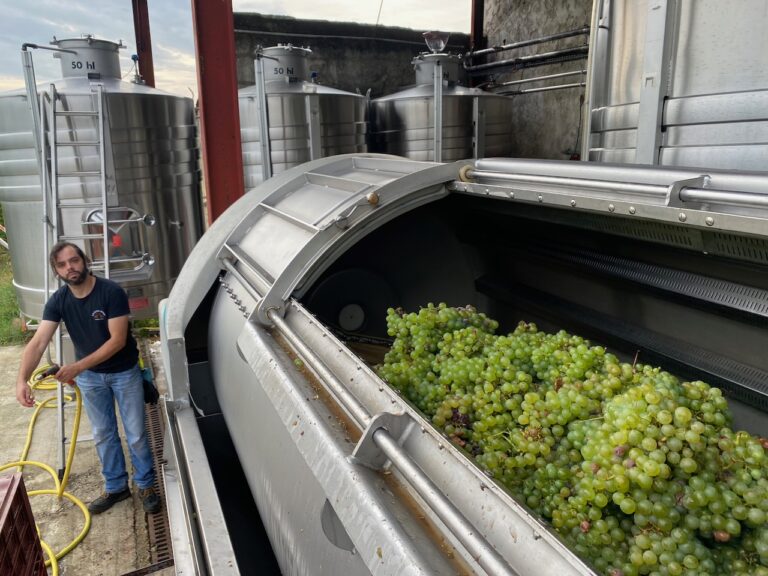
So Ronan kindly offered to put the last minute vacancy on his Facebook page. As he’s the CEO of the Court of Master Sommeliers and a decent fellow, he has a huge following on Facebook, so we received lots of applications. Bruno from Portugal was already an assistant winemaker in Bordeaux at an uncooperative Cave Coopérative for the vintage, and decided he could be involved in making better wine here. For Nelly and Daniel to describe his work ethic as ‘dynamique’ is high praise indeed.
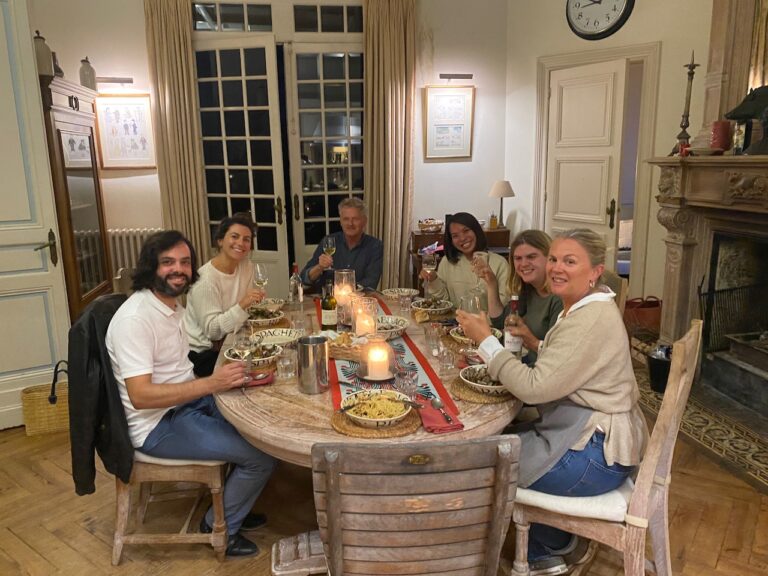
We also took on Winnie, a sommelier from Singapore via the Caribbean, who was on her way from Madrid to London, and Sophie, an interior designer from Paris, via Paros in Greece. This was the intro dinner.
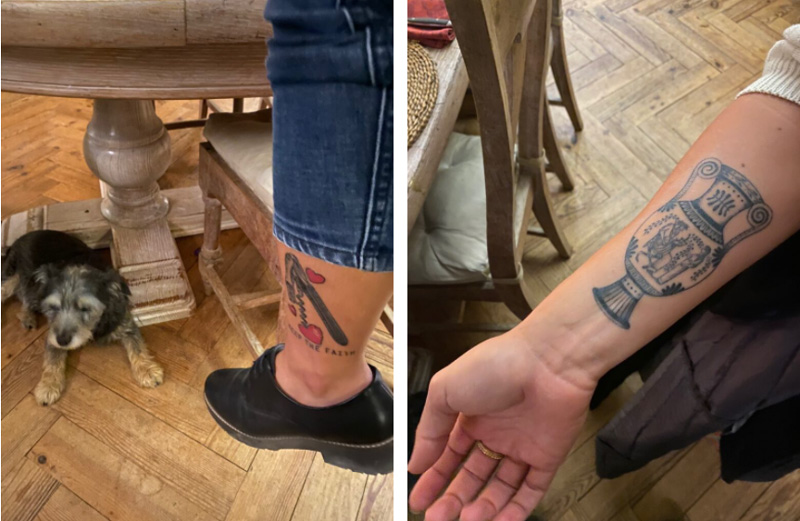
The tattoo competition was narrowly edged by Winnie with her corkscrew and ‘keep the faith.’ Her story and quest to become a Master Sommelier can be read here on JancisRobinson.com.
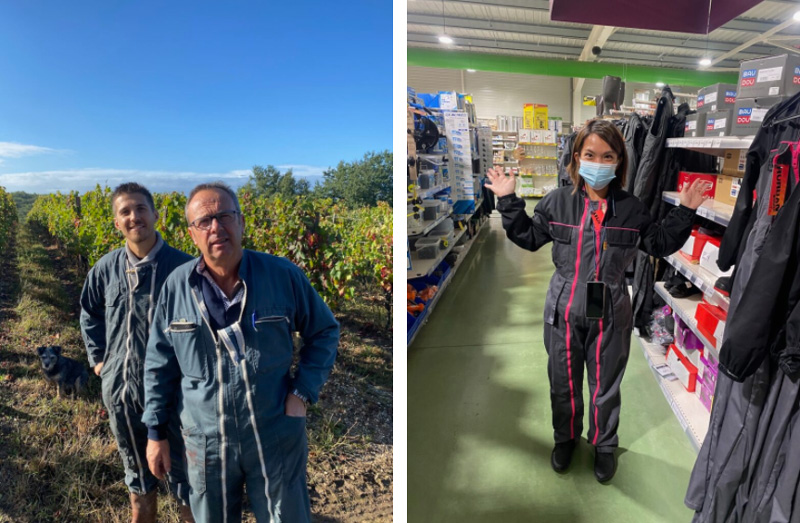
Harvest fashion isn’t restricted to these zip-up one piece suits, but they’re practical and de rigueur. Almost. Our old friend Guy and his son Nathan wear them when they drive their harvesting machines here. At the local Point Vert the female versions have pink zips. Hmm.
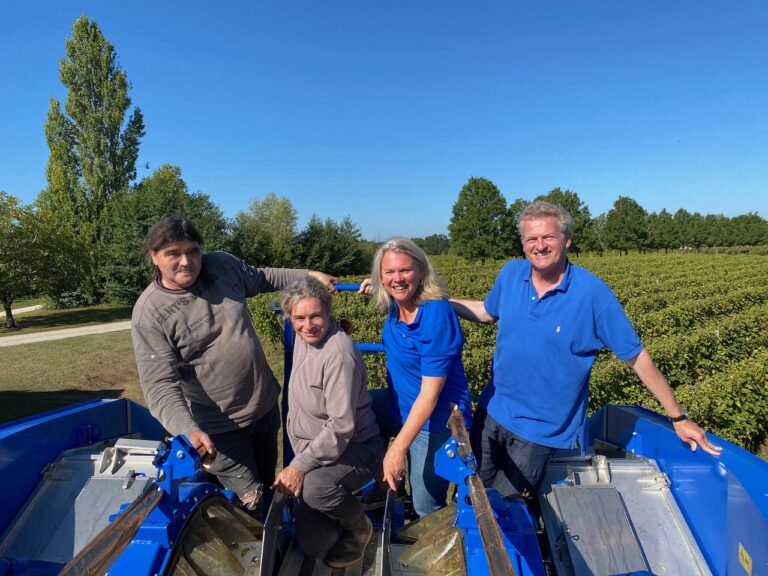
Our trainees are most welcome. Nelly started with us as a stagiaire for our first harvest in 1999 and hasn’t been allowed to leave since. Daniel has been here even longer.
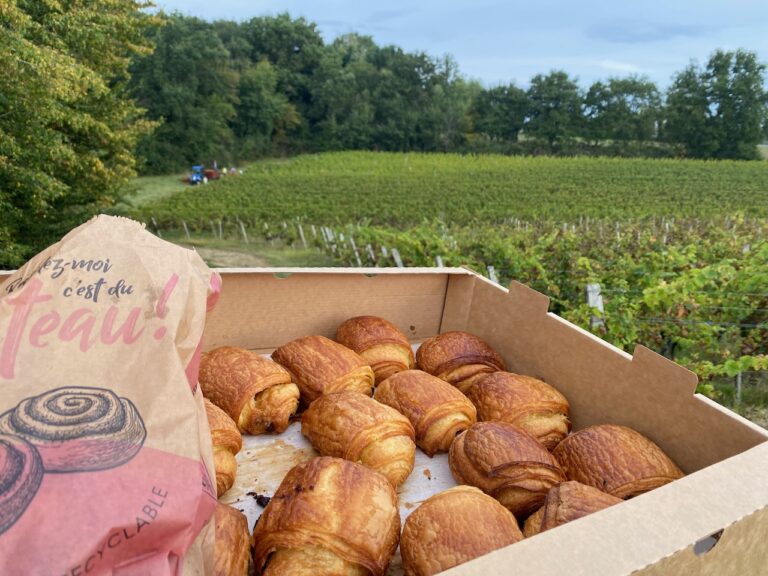
My role is CEO of the chocolatines (pains au chocolat if you’re not from around here) for the morning break during the harvest.
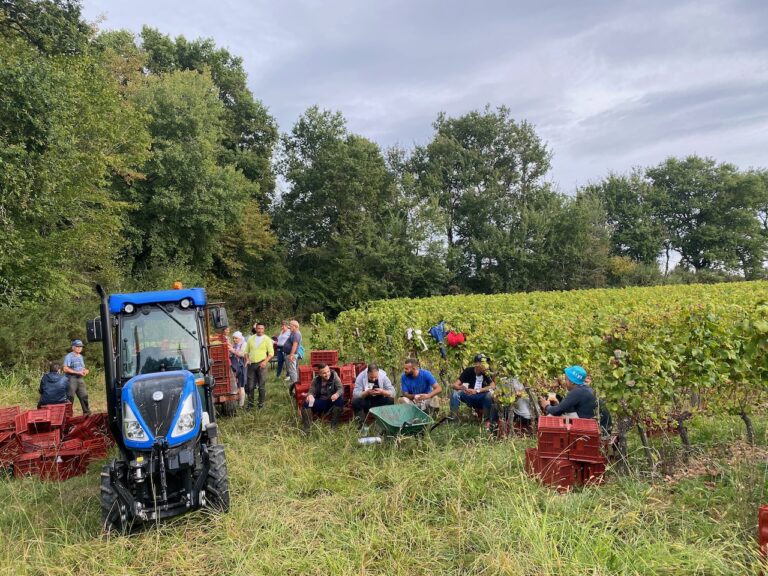
Coffee and water break in 2021. And chocolatines.
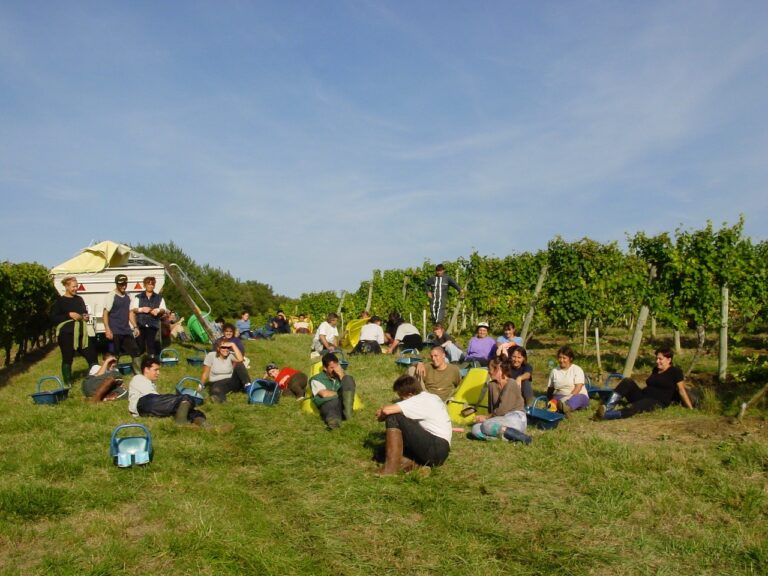
This was the harvest team in 2001.
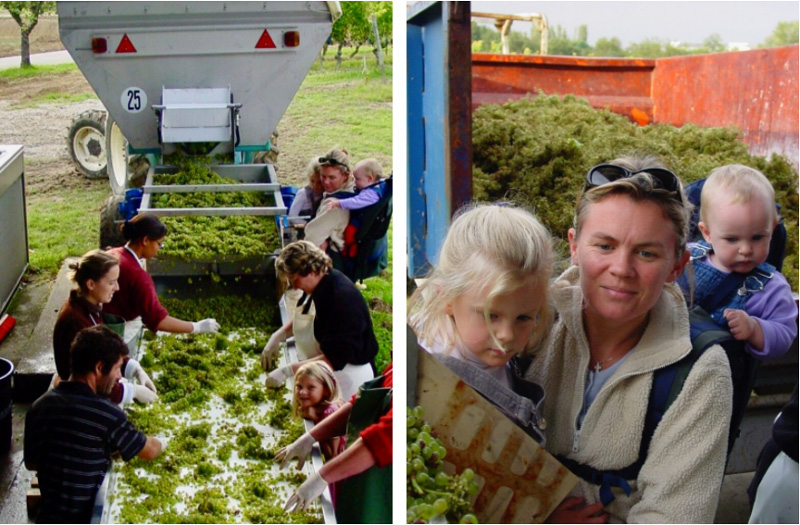
Ange with Sophie, 4, and Bugs, who was born in January 2001. With Georgie, 6, on the sorting table for the Sauvignon Blanc.
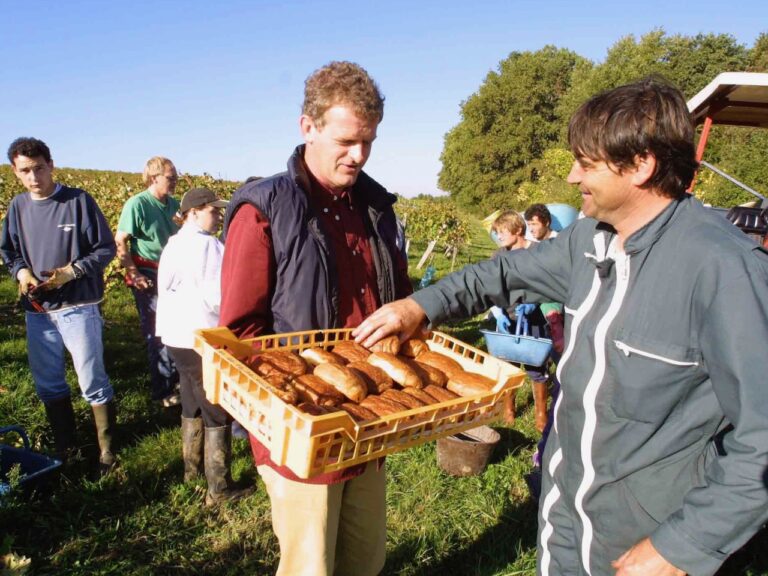
The chocolatine thing has been a tradition for the last 20 years. And there’s Daniel in one of those all-in-one zip suits.
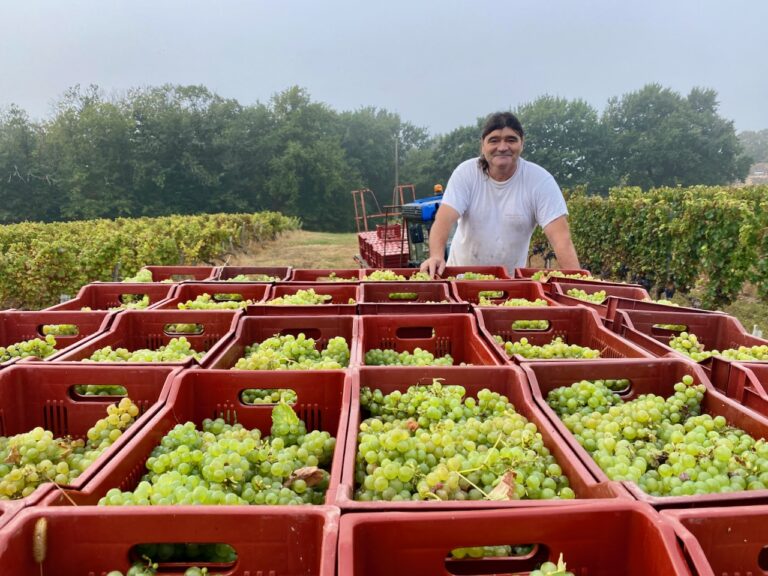
This year we leased some vines from neighbours for making crémant, white wine and rosé. Daniel isn’t easy to please but he’s happy with the crémant crop there. And he still has no grey hairs, which is remarkable really.
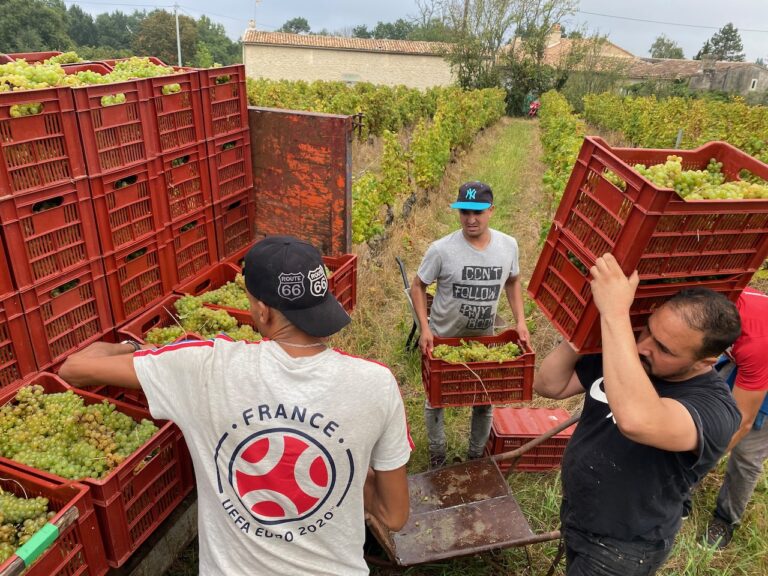
Sémillon from La Sauve, just down the road.
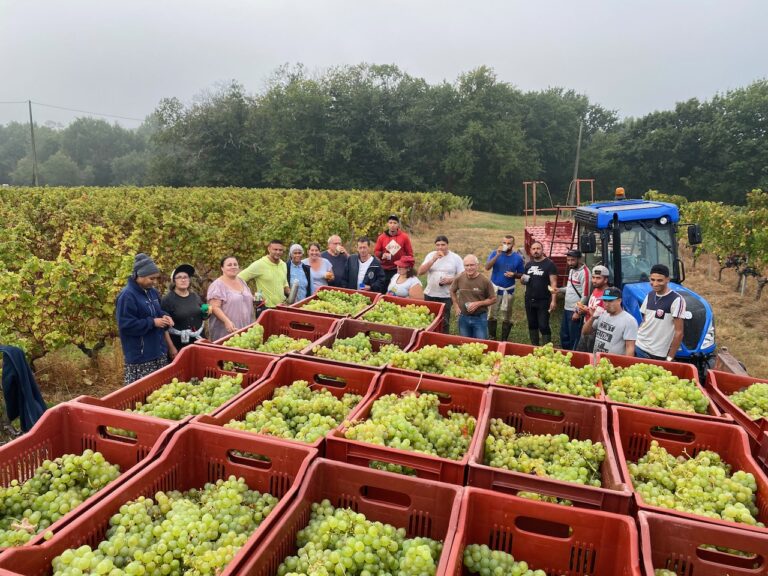
We’ve mentioned before that we are not allowed to buy grapes from neighbours, because as a viticulteur (grower) and château you have to make wine just from your own grapes. Unless, that is, you take out a lease on a vineyard in advance. In a year like 2021, it’s a risky business. With the whites in, we’re quietly confident but we are about to harvest the Cabernet Franc for making rosé so we won’t tempt fate.
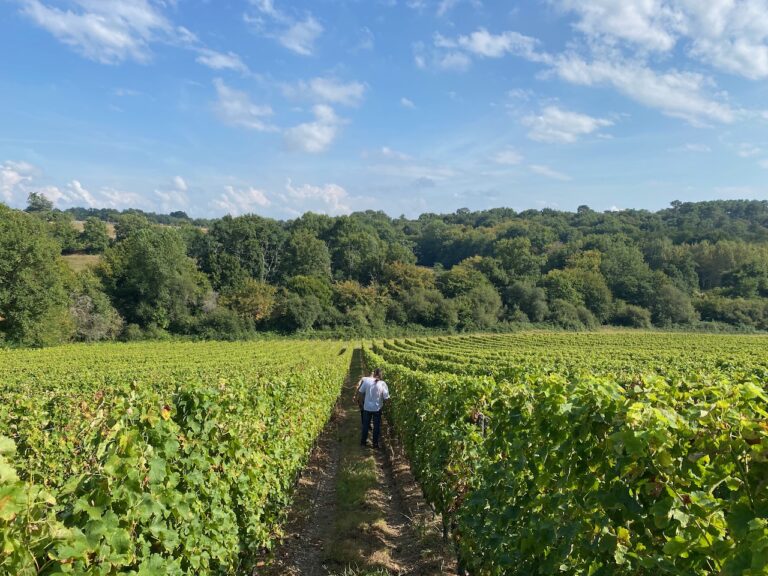
After the Sémillon for the Crémant comes the Sauvignon Blanc for dry white. In effect, our signature dish and best selling wine. (8 September.)
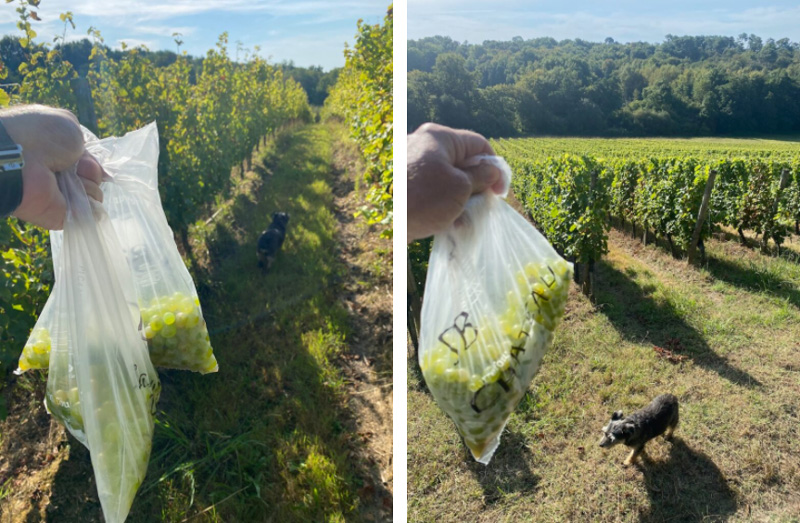
Another of the CEO’s tasks is to collect grapes as samples to take to the lab. The advantage is that I get to taste a lot of grapes, assess all the parcels and understand when to pick. The advantage for Daniel and Nelly is that it keeps me away from the winery and making a mess of things there.
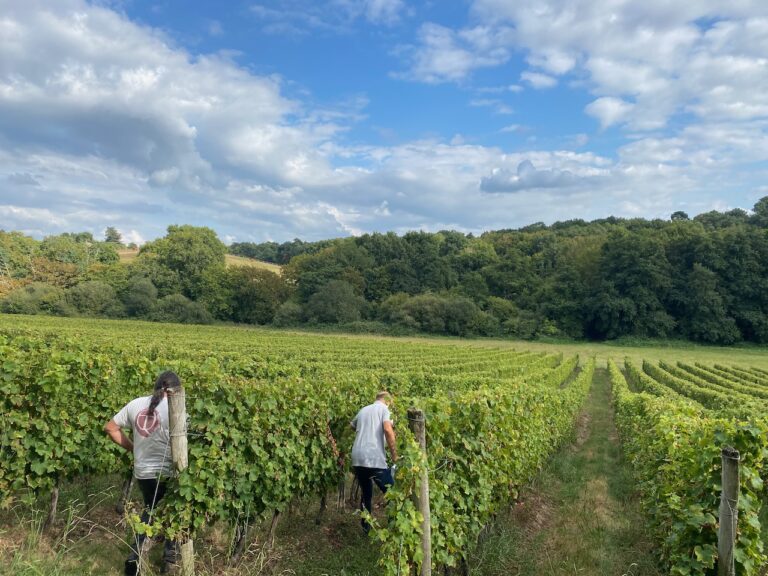
As harvest approaches, we taste the grapes and check the health of the bunches about every four or five days. (16 September.)
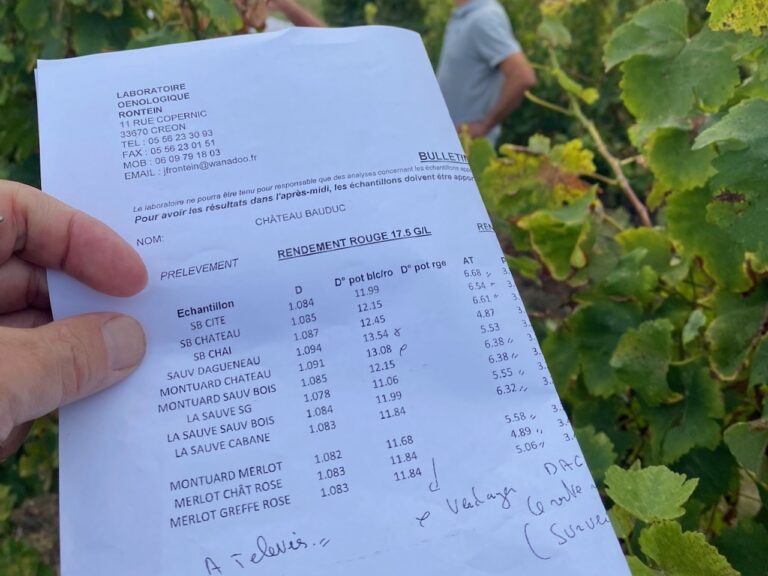
The analysis of the grape juice from the samples gives us an idea of sugar levels (and probable alcohol) and acidity (AT is total acidity fwiw). The first nine are different blocks of Sauvignon.
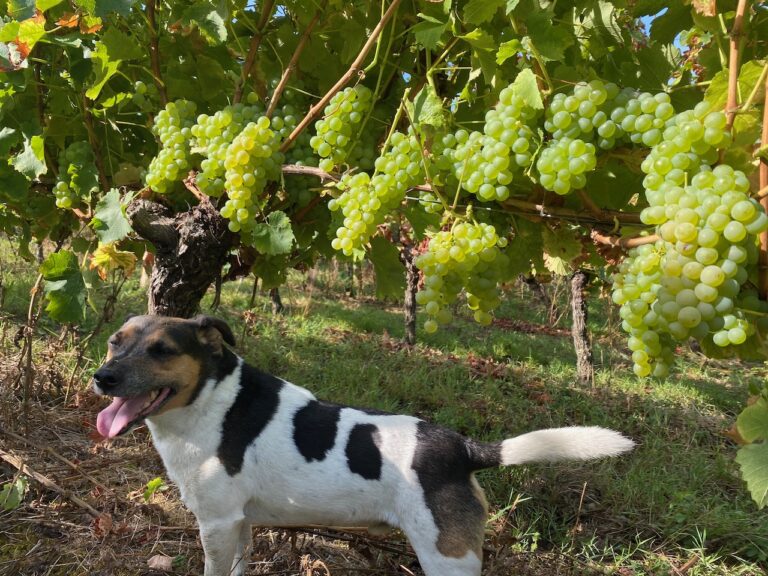
The numbers are just an indicator – taste is the most useful guide.
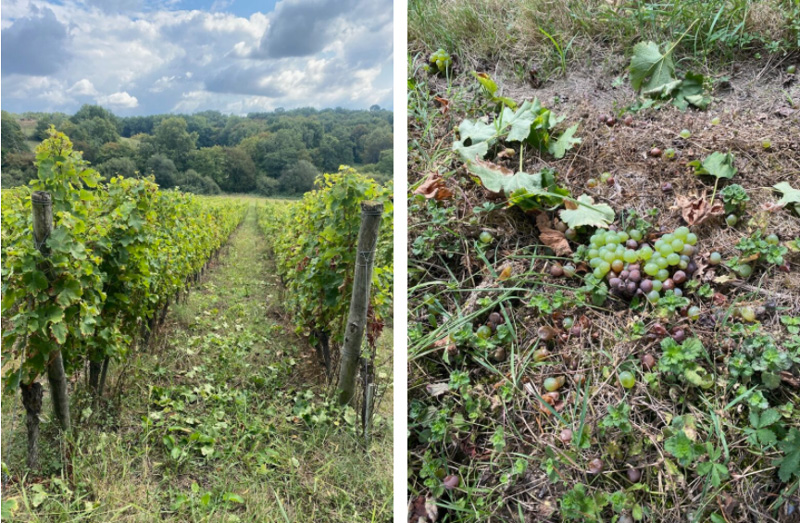
As we wait for the ideal ripeness, there’s a risk of rot or mould, especially with a later, trickier vintage like 2021. So go through the vineyard just before harvest and cut out the offending grapes or bunches.
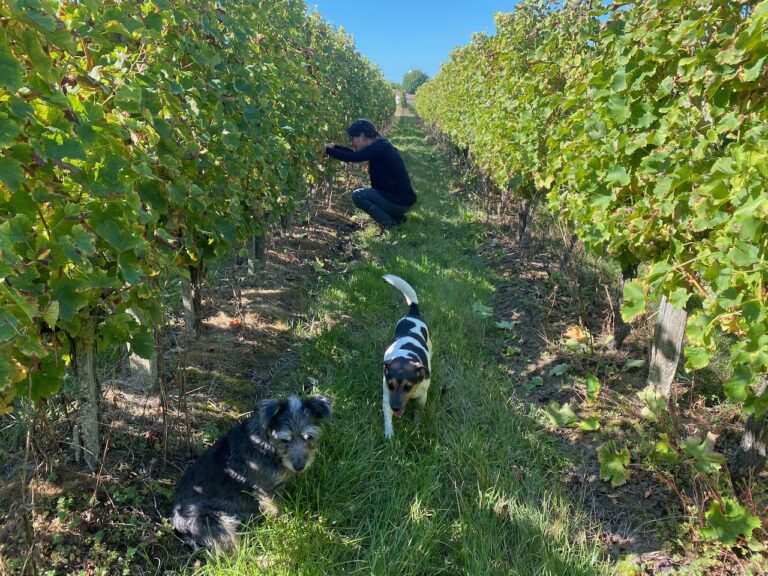
Sophie our harvest trainee cutting out any dodgy Sauvignon Blanc.
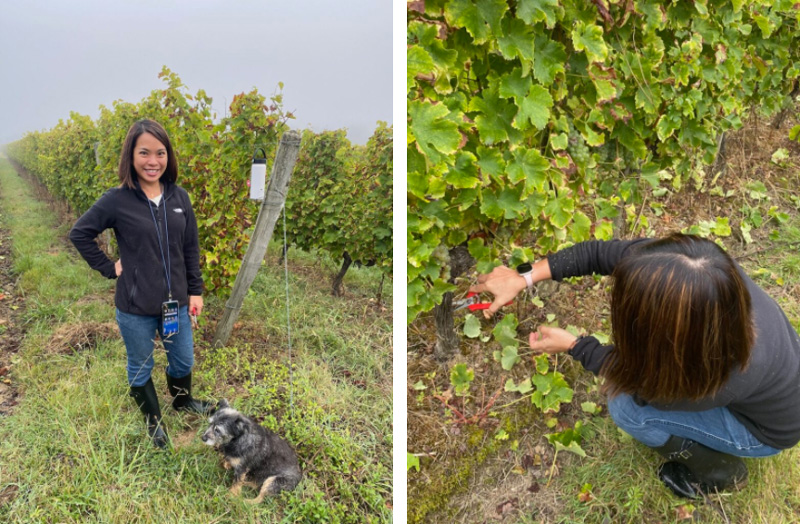
Winnie doing the same. All hands on deck…
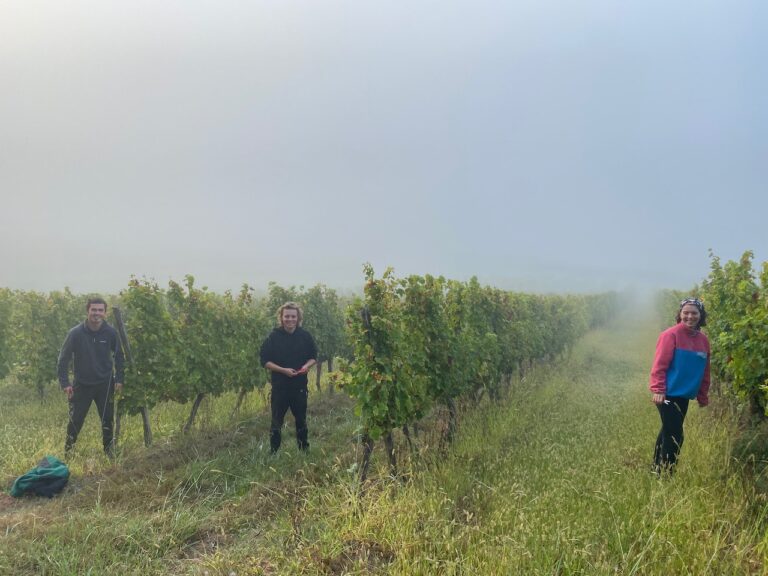
… Ben Cobley, the son of old friends and customers in England, asked if he and his friends could park their converted camper van here and do a little vineyard work.
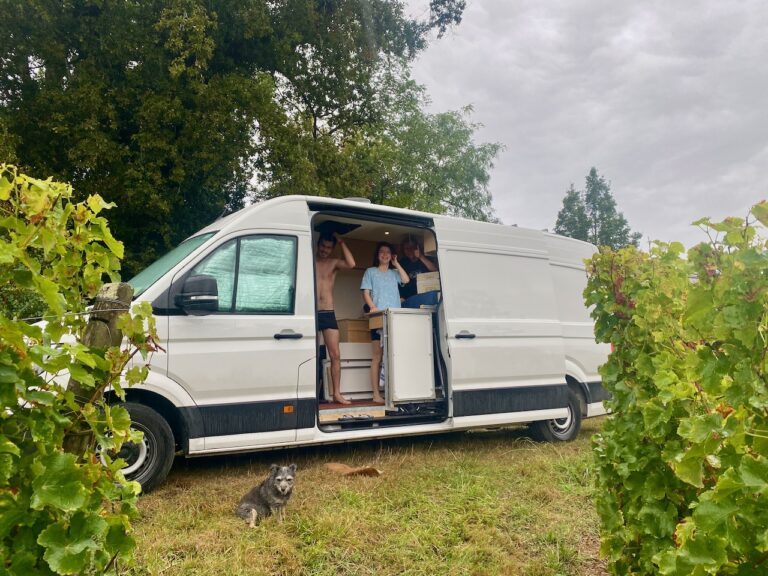
A genuinely rustic, harvest experience.
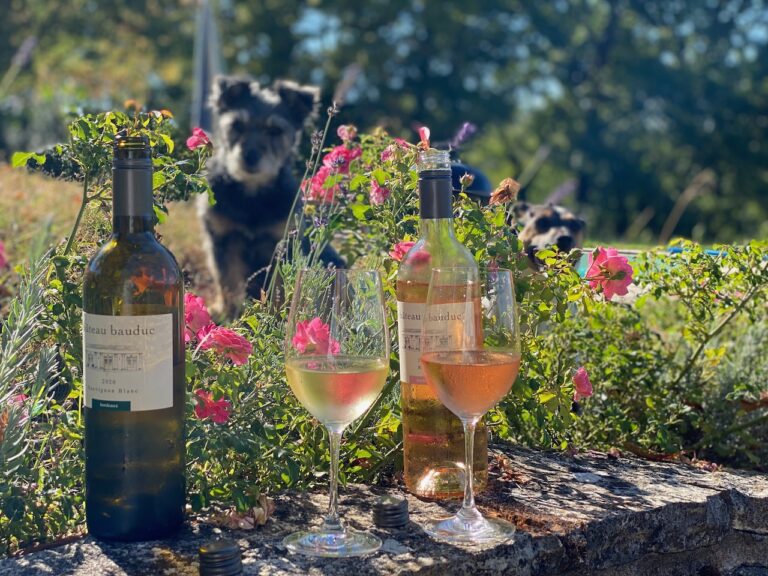
Now we had some lovely weather in September, suggesting to us that sales of summer rosé weren’t completely dead. This hastily taken pic was for our Bauduc Selection case of whites, reds and rosé at just £75 for six bottles.
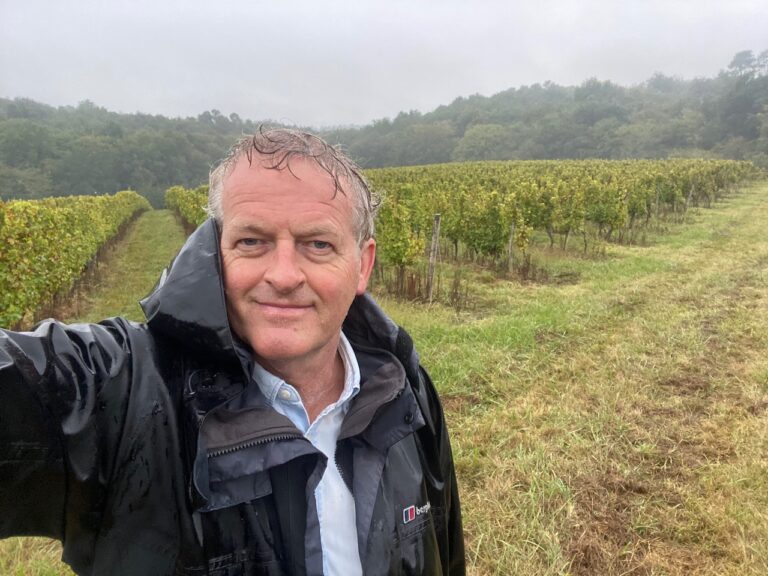
Rainy images probably don’t sell as well. This ‘living the dream’ Saturday pic was the day before we started the Sauvignon Blanc harvest on Sunday 19 September.
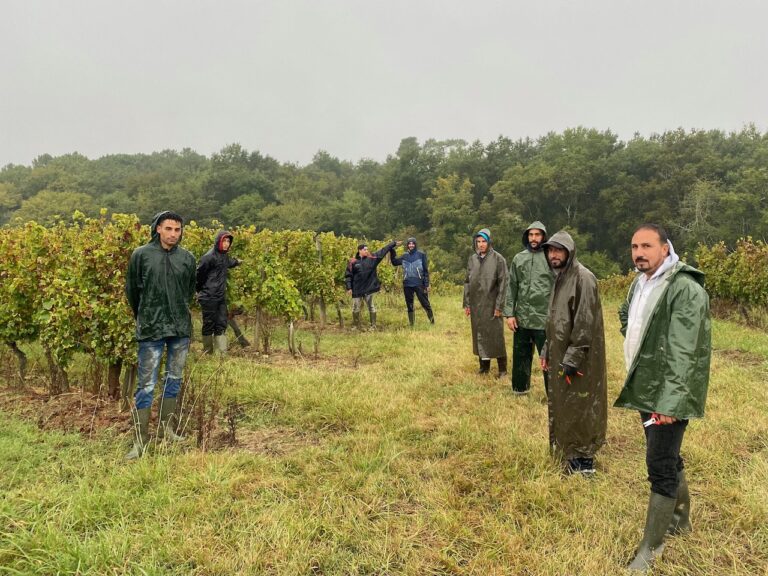
I was showing our Moroccan team of seasonal workers the block of older Sauvignon Blanc vines that needed checking and sorting for any rot. As you can see, they couldn’t have been happier.
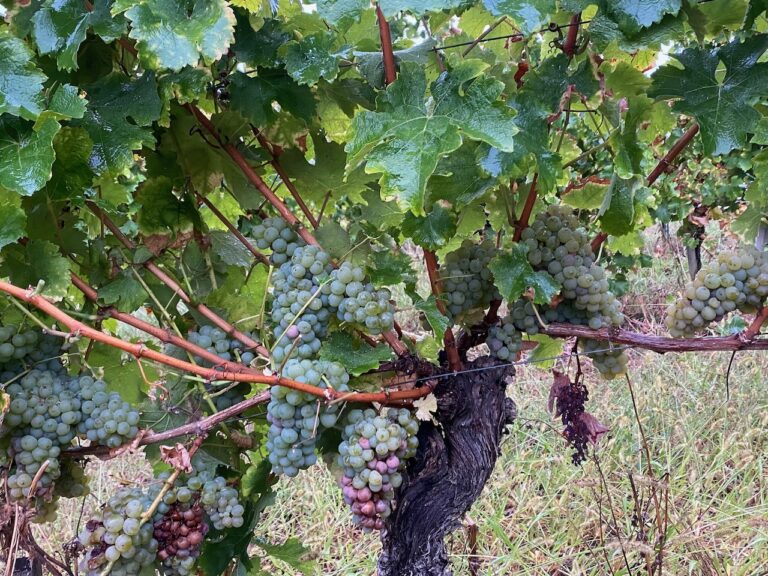
Every ten vines or so there’d be some botrytis. Here’s the before shot, with the after pic below. It’s pretty obvious what needs to be removed.
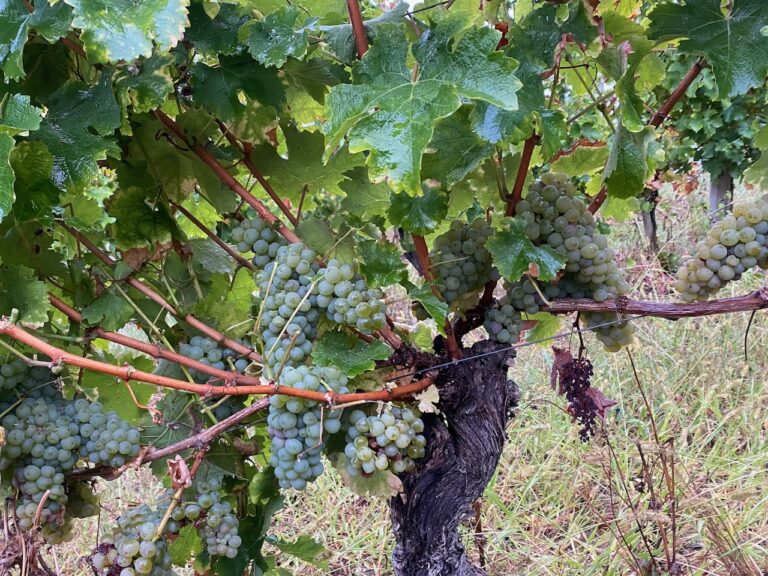
My rule is that if you wouldn’t put it in your mouth, we snip it off.
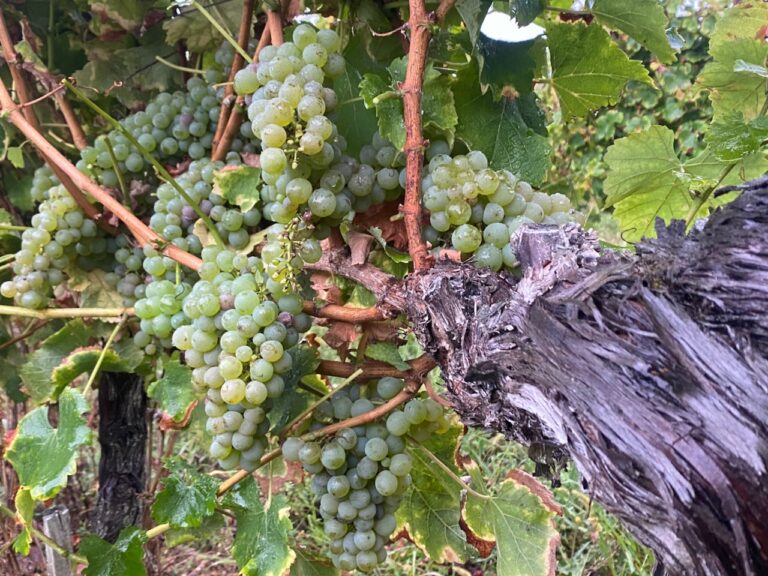
The rot can spread really quickly, so we have to act fast in the humid conditions.
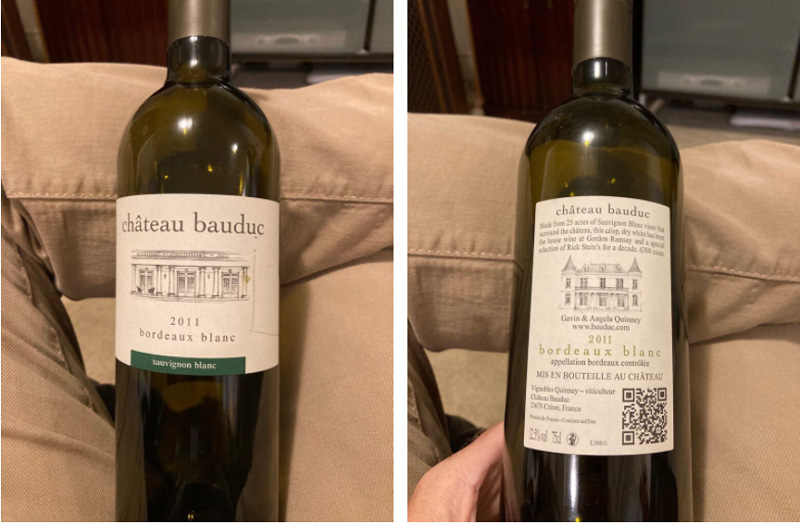
Just yesterday we received an email with these pics from Rob in Canada, saying that a few years ago he’d purchased our 2011 ‘from the government liquor store in Vancouver’ and asking where could he find the latest vintage.
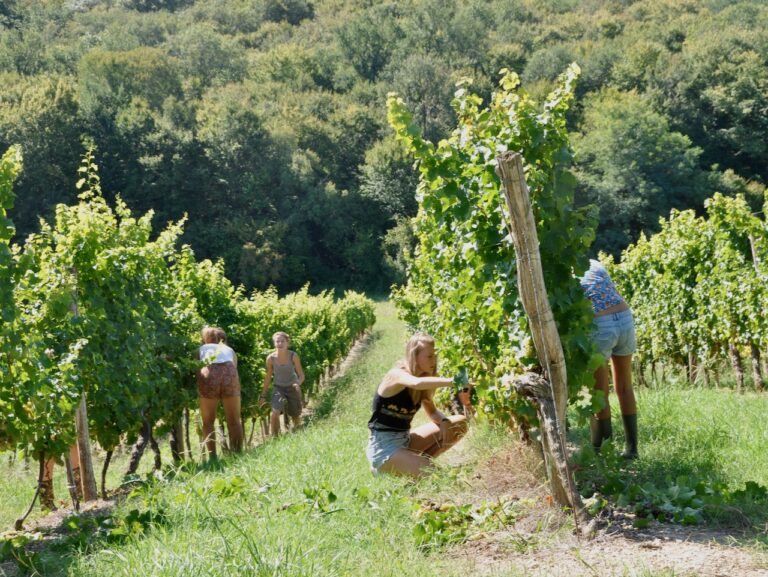
It reminded me that the last time we’d spent so many hours painstakingly cutting away any rotten bunches was in 2011. This was Georgie and friends from her lycée in Bordeaux at the end of August – 2011 was a precociously early vintage but one where the rot spread quickly. (One reason why it’s such a good year for Sauternes – but that was noble rot, not nasty rot.)
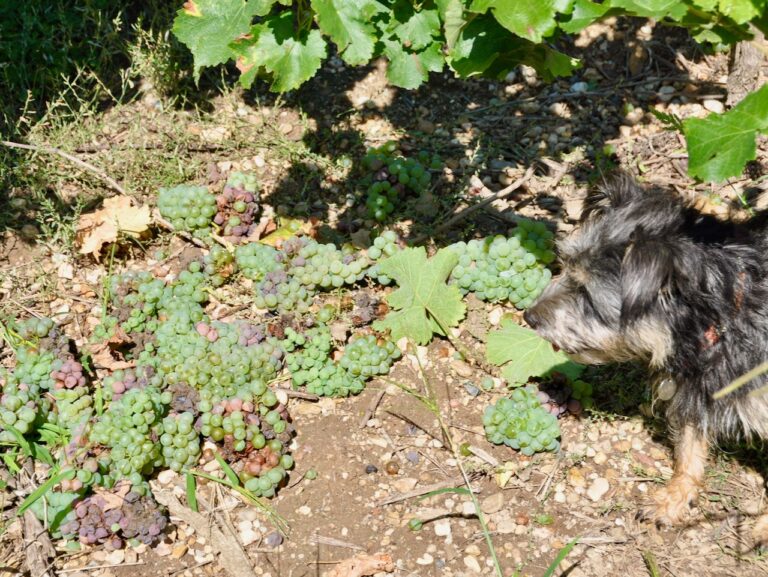
Margaux was around then too. Here she is thinking that maybe the girls were being a bit severe back then.
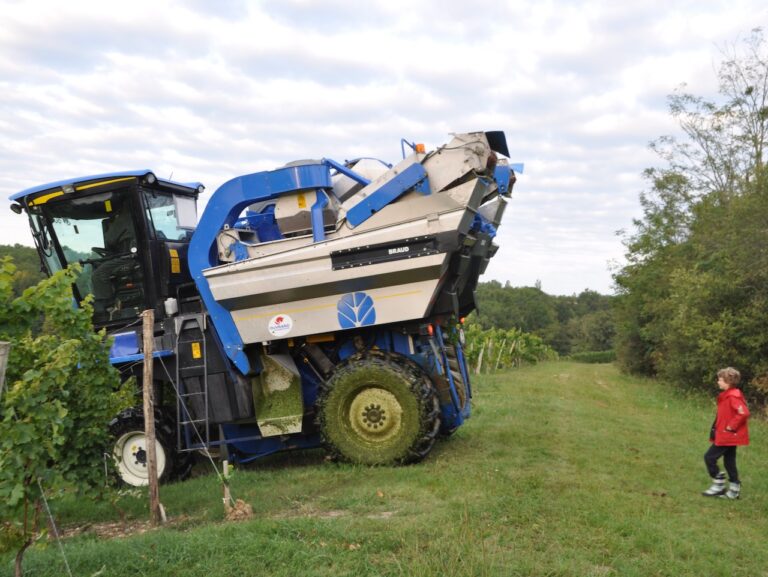
Tom was still only seven in September 2011.
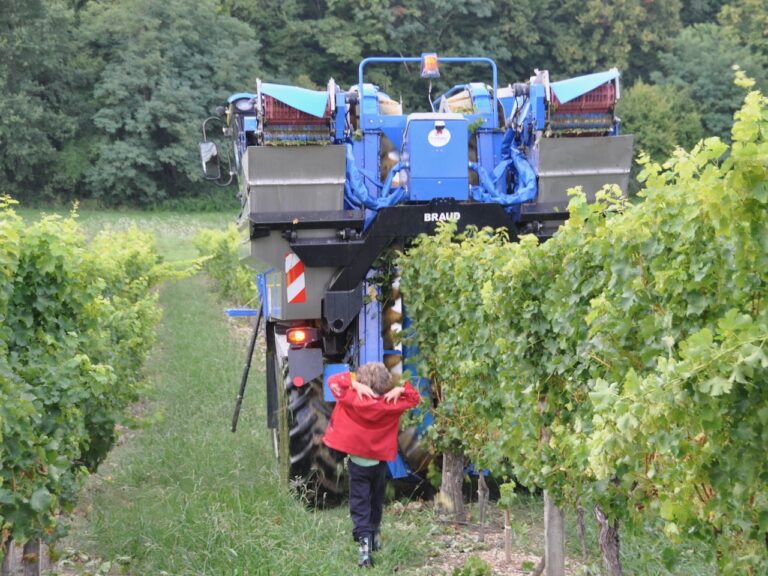
The harvest of that block was on 1 September 2011. In 2020 on 30 August. This year we picked that Sauvignon Blanc on 20 September.
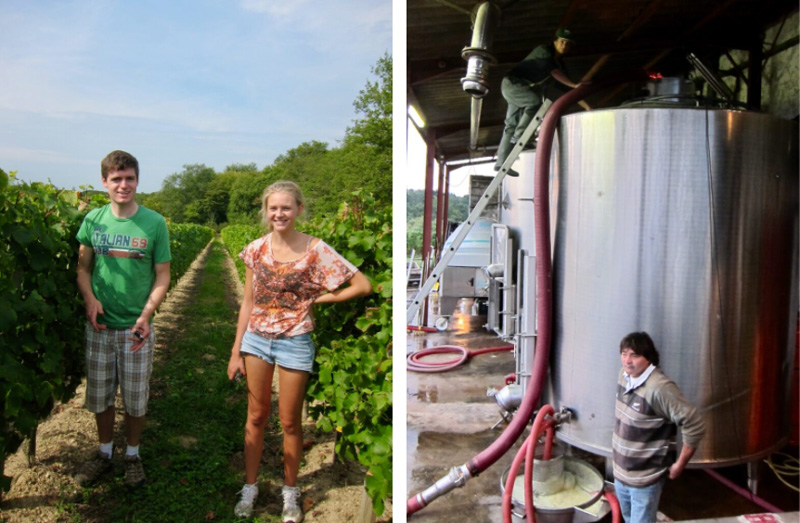
Georgie and her cousin Freddie snipping off any mouldy bunches in 2011. Daniel and Nelly in 2011, right.
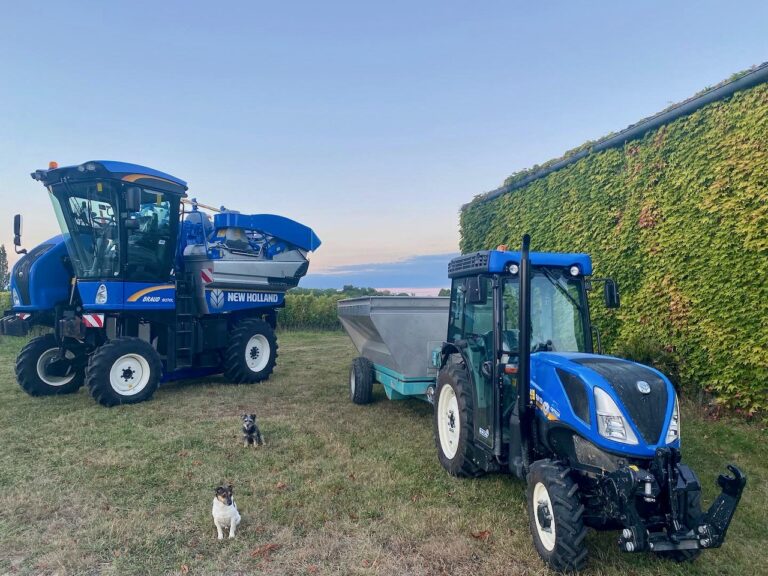
This year the start of our Sauvignon Blanc harvest was Sunday 19 September.
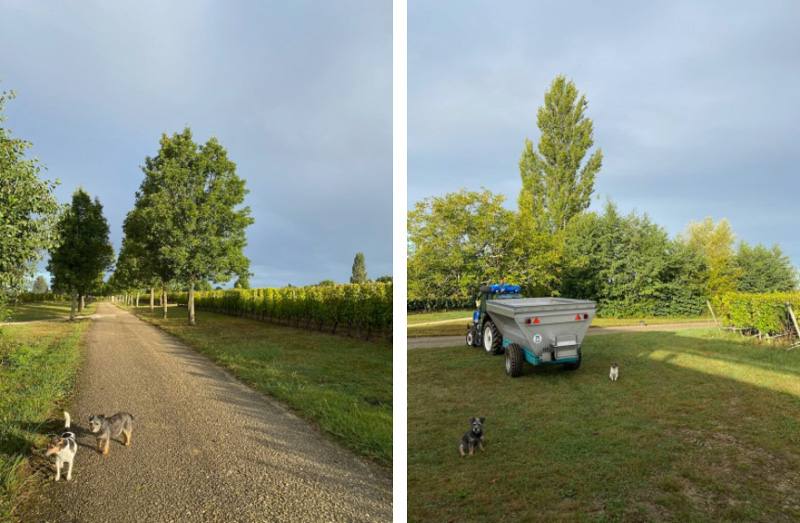
On a Sunday, we’re not allowed to use a harvest machine before 7am, so as not to disturb the neighbours. (Goose the cat joined us too, on the road just beyond Pavie, right.)
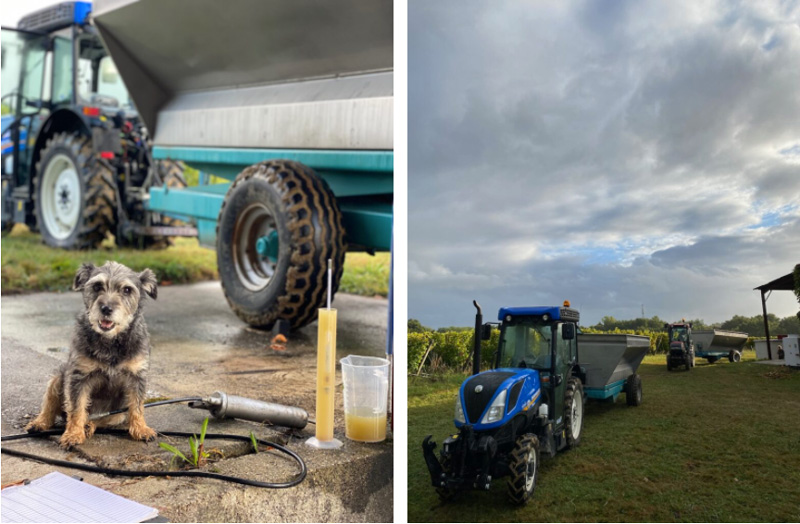
Margaux as the newly filled trailers arrive.
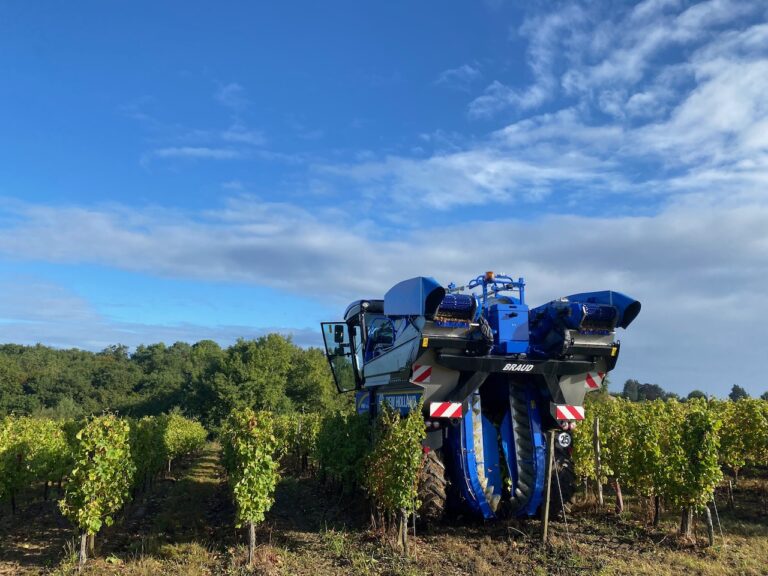
Sauvignon Blanc, Sunday 19 September 2021.
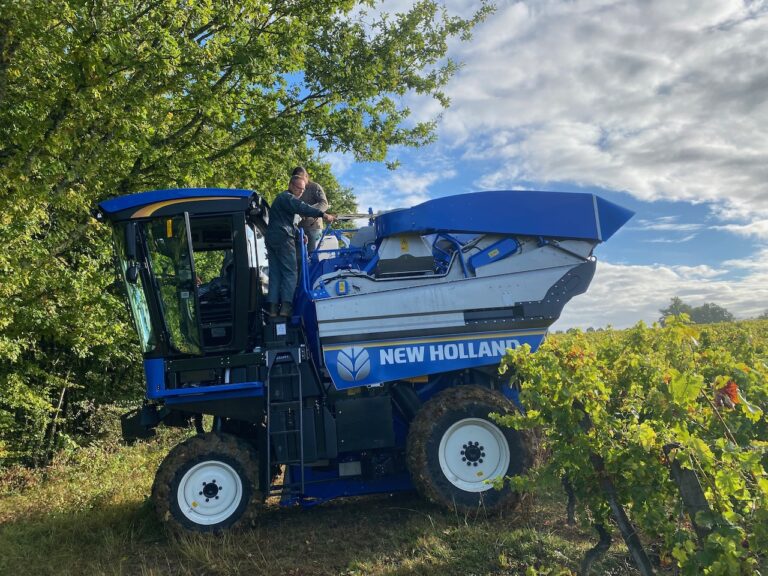
Guy and Daniel sawing off a couple of branches.
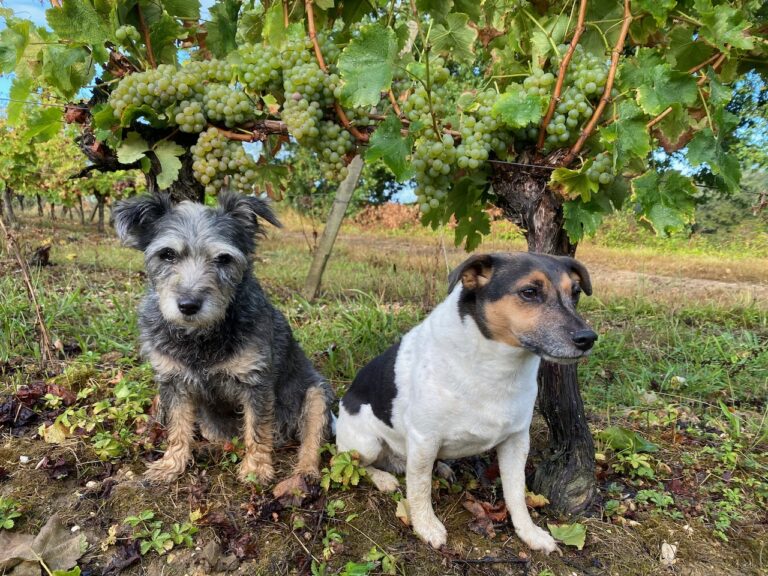
Now you see ’em…
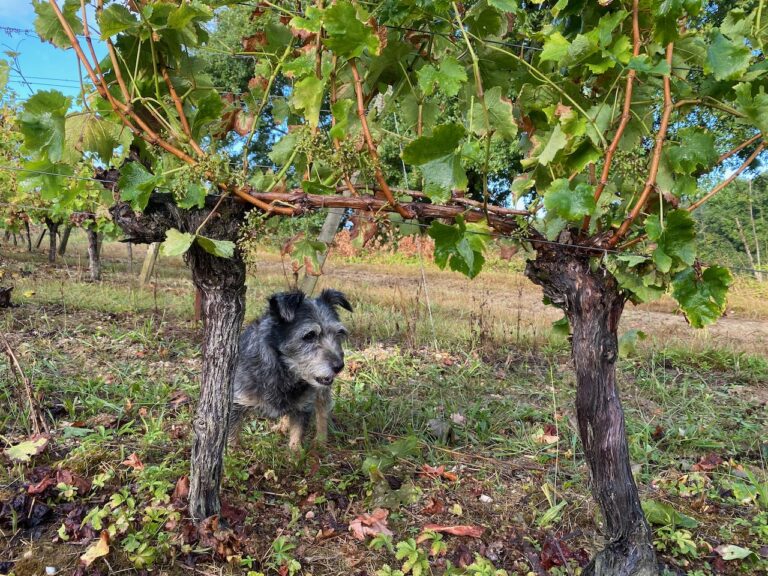
… now you don’t.
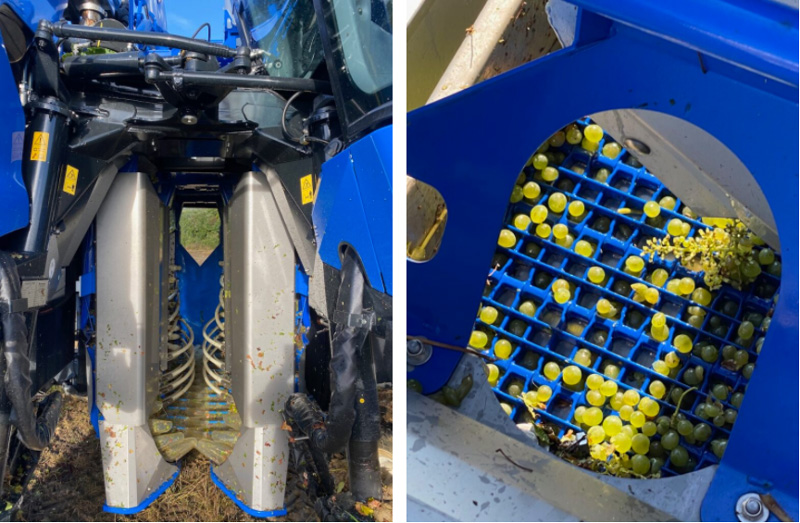
People often ask how the machines get the grapes off. Inside the machine are big bands like windsurfer booms which vibrate the vine and knock the grapes off, and into the rotating cups below. Up top our latest model has an excellent sorting system.
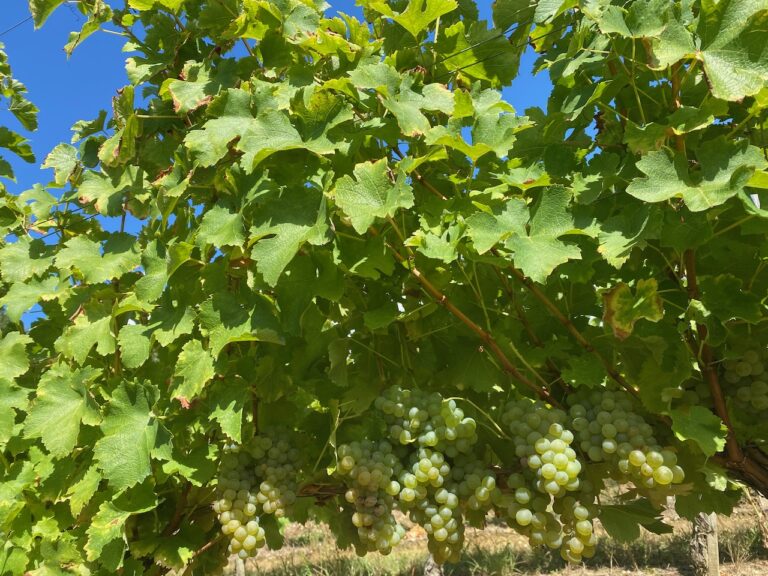
So it takes no time from this…
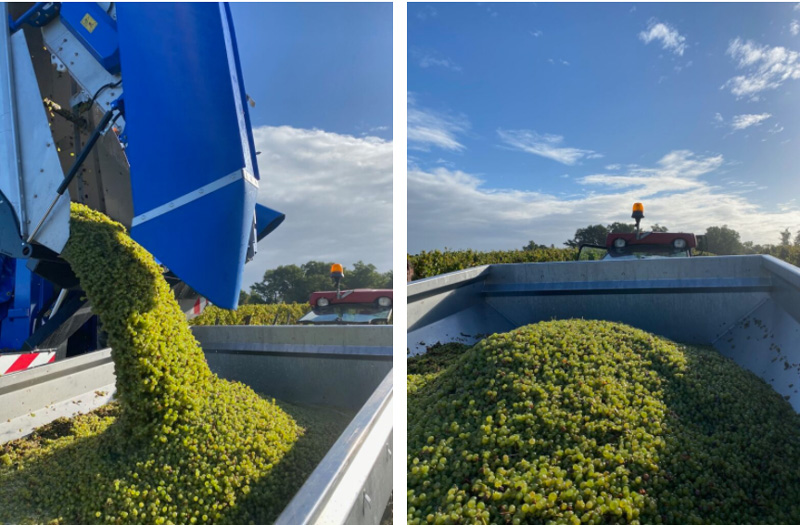
… to this. And into the winery.
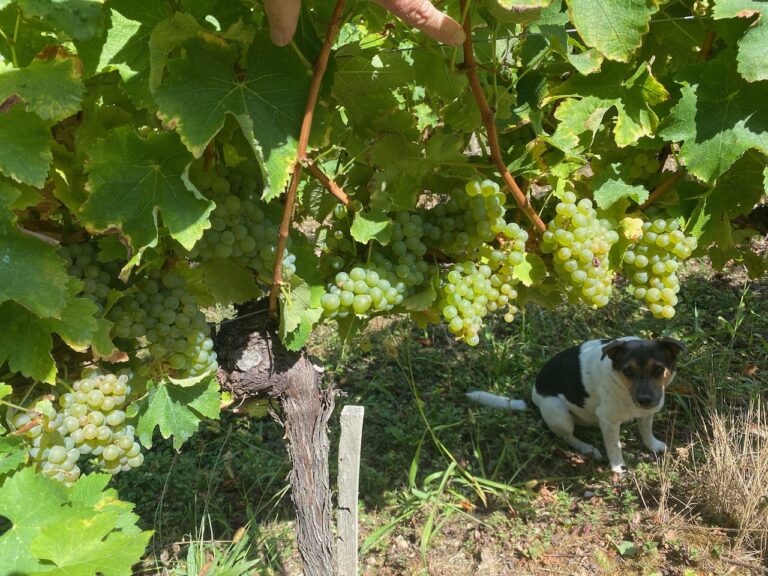
Other blocks soon followed.
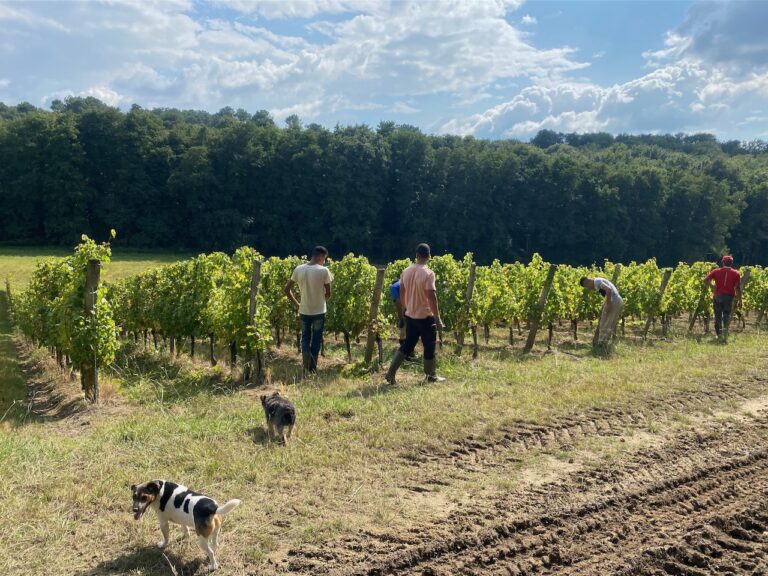
The guys removed any unsavoury bunches just before each parcel was machine harvested.
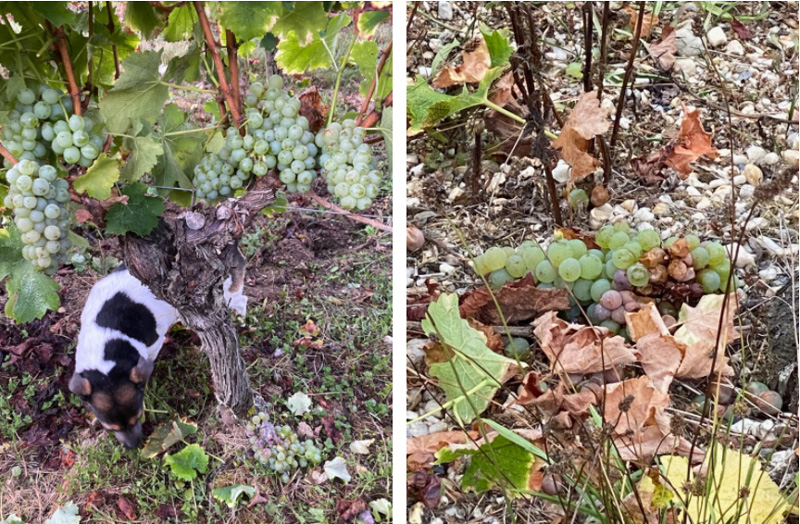
Snip snip.
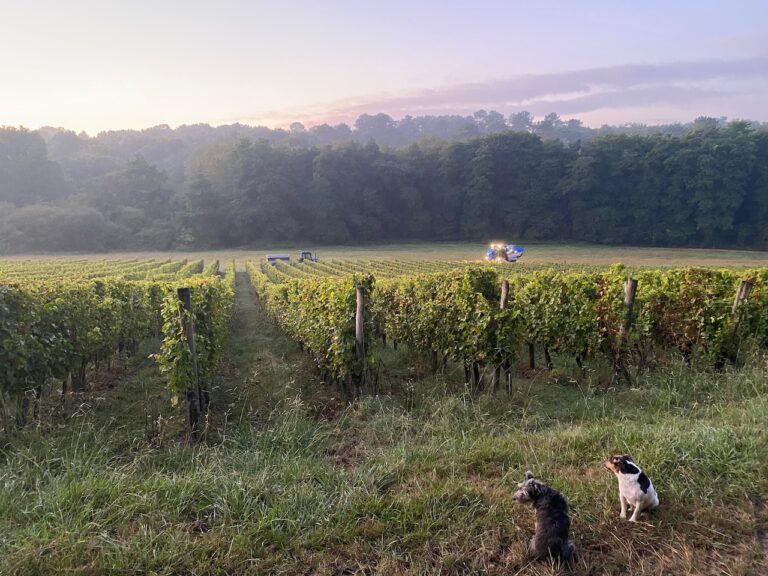
Sauvignon Blanc ‘Château’, 22 September. Last year we did this block on 1 September.
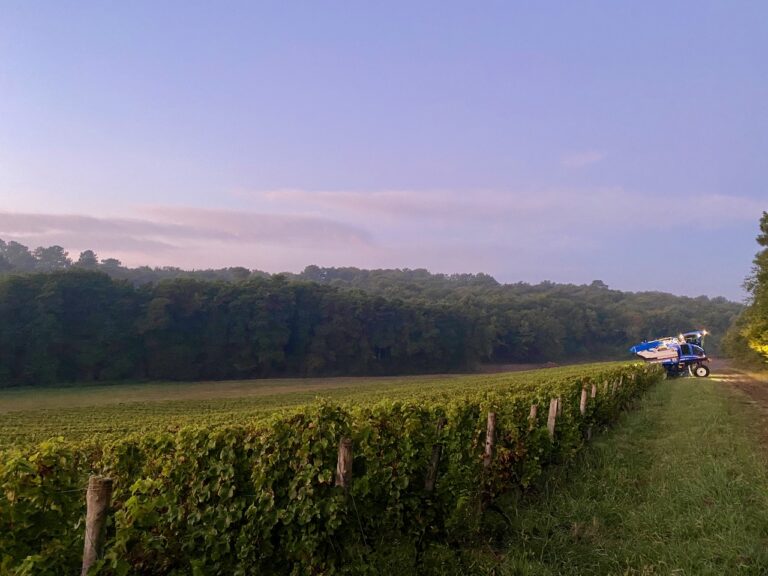
Early start.
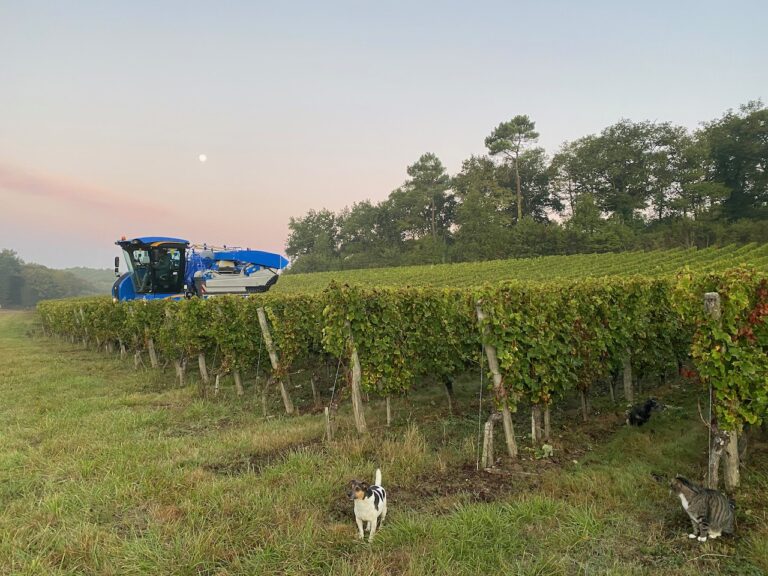
Goose with Pavie and Margaux. Georgie called him Goose because she didn’t want the cat to have a wine name like the dogs.
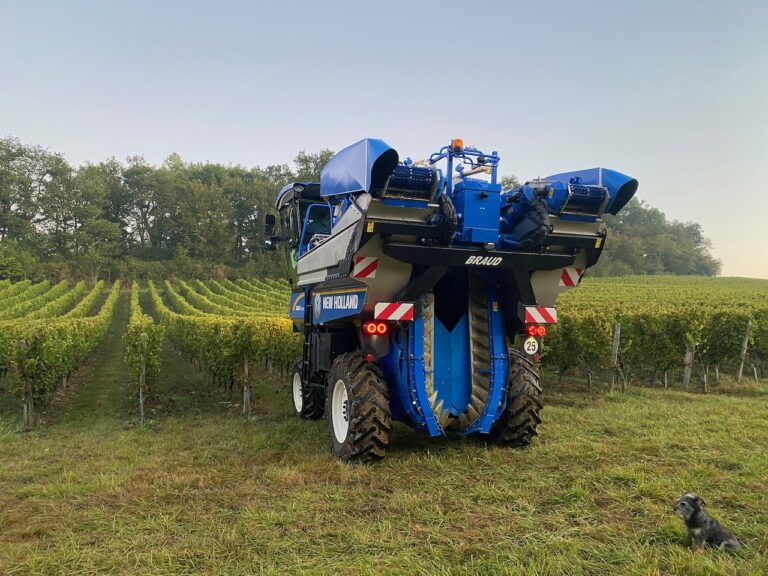
Margaux is often uncomfortably close to the machine.
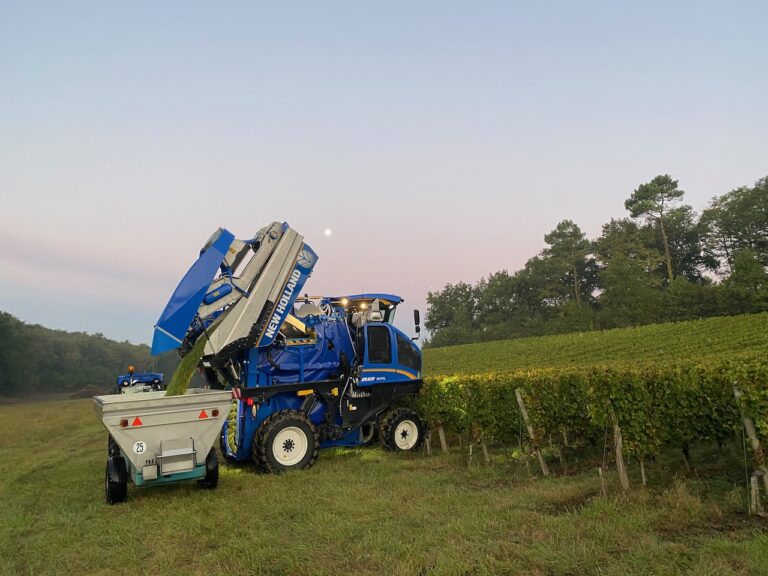
A good yield.
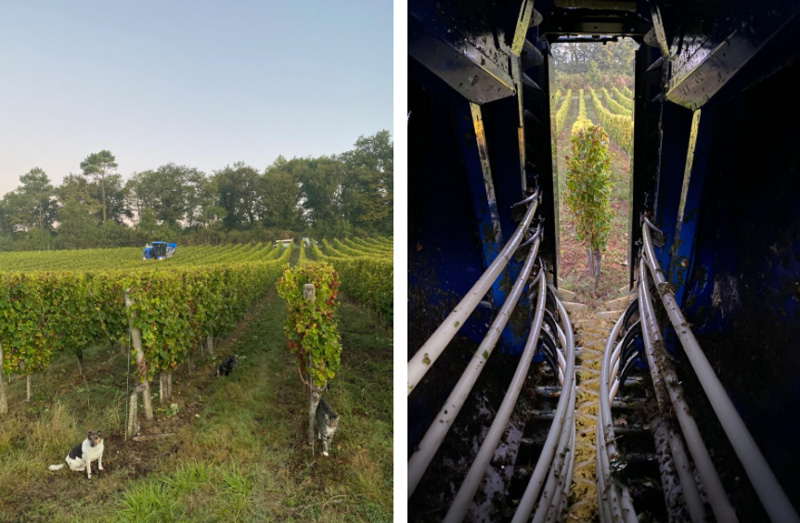
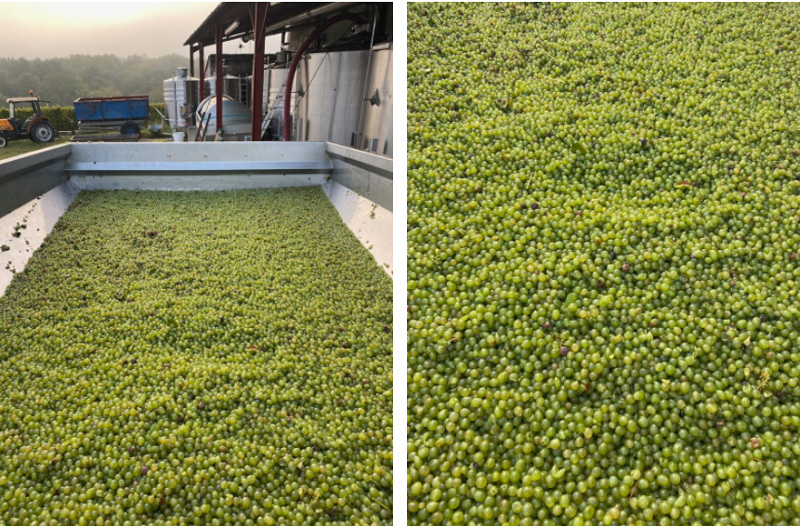
I’m pleased we removed any dodgy grapes. Be a pity to spoil it all.
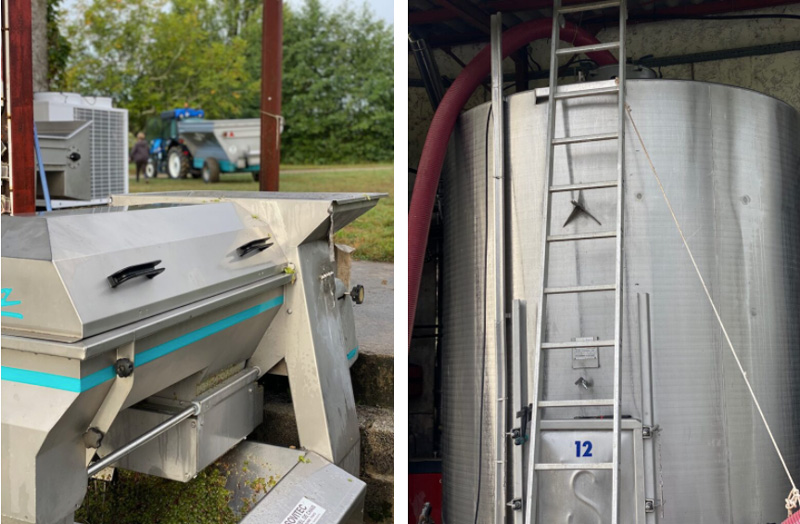
The new cooling system, top left, is working well. We leave the juice with the skins for a cold maceration for a few hours before pressing.
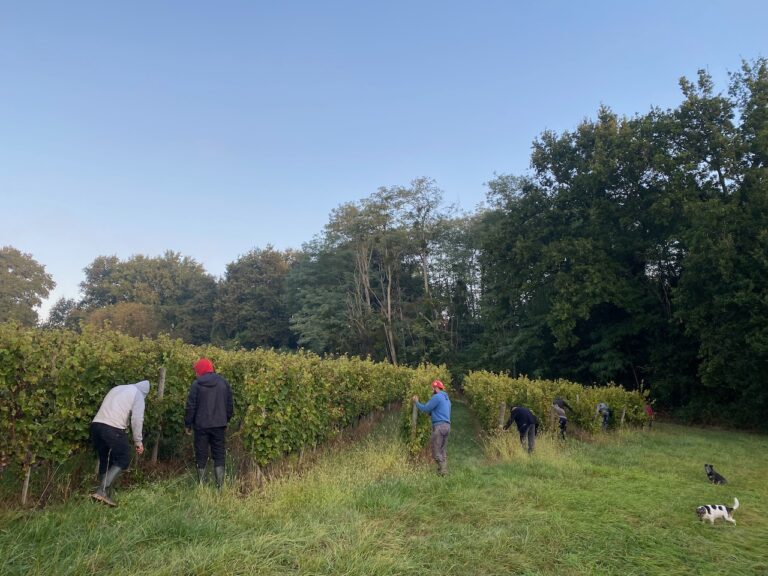
The same day and the Moroccan team are out cleaning the next parcel in line.
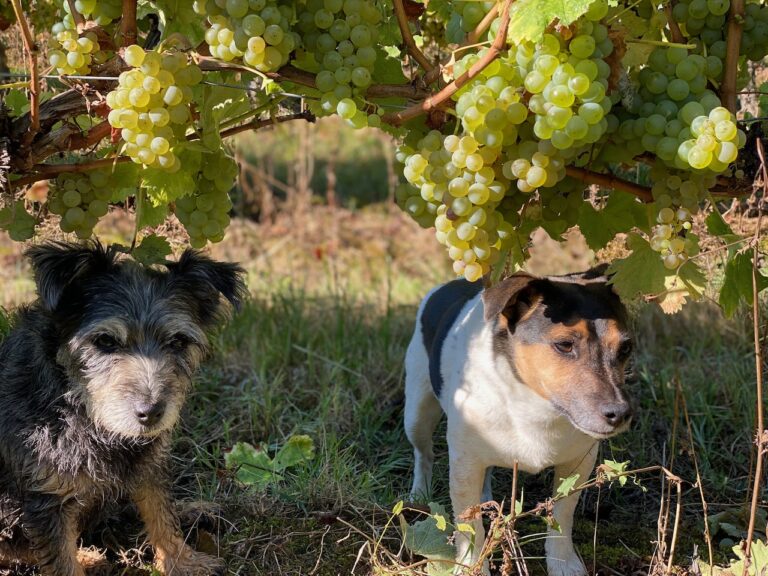
Leaving just the quality stuff.
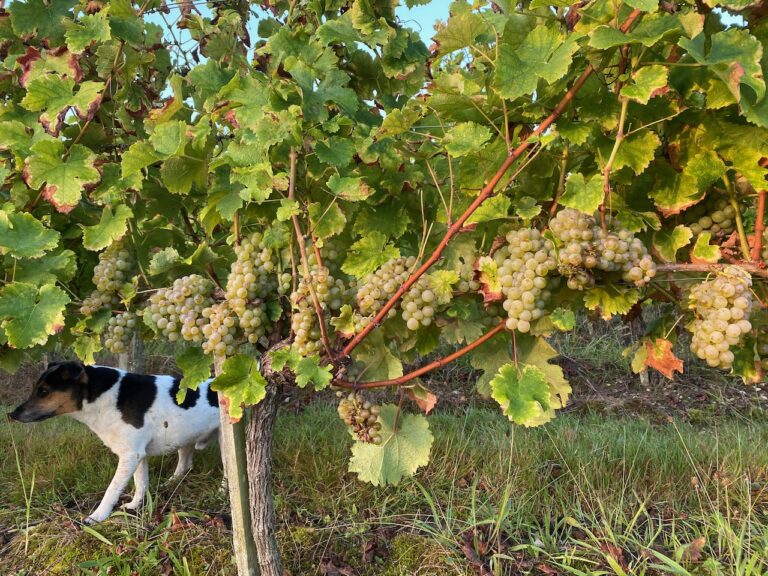
A good crop of Sauvignon. We so nearly lost this lot to the frost in April.
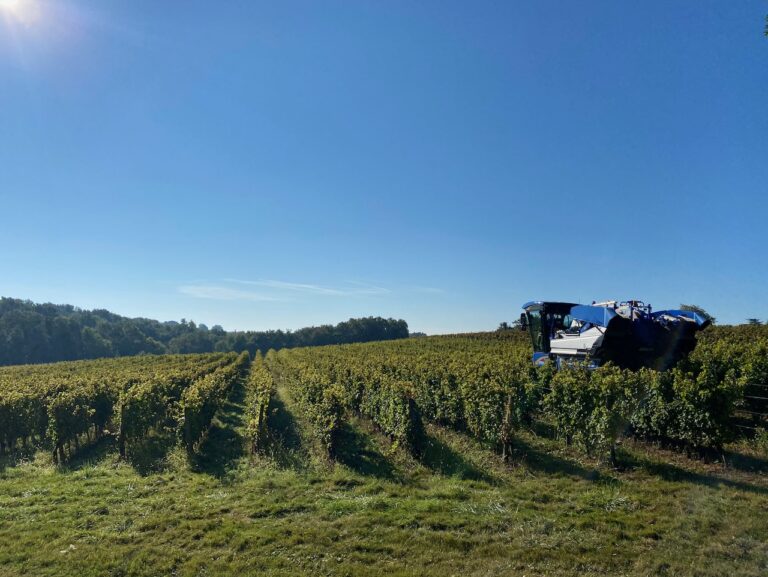
We planted this block in 2008.
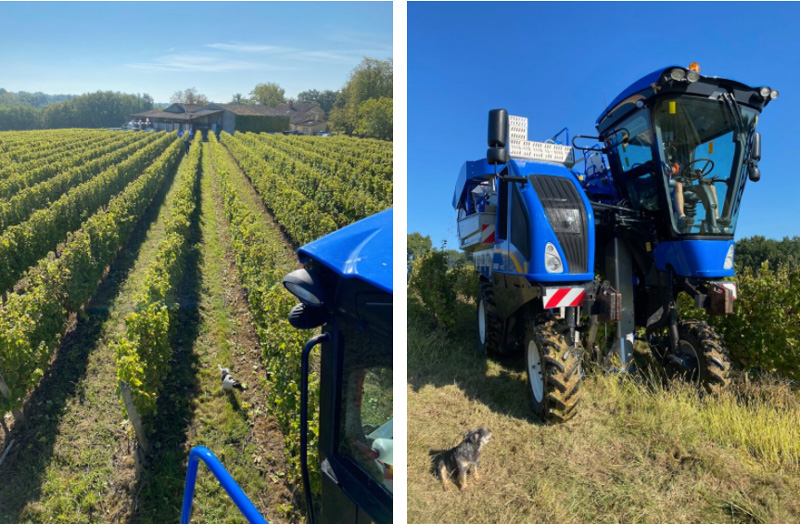
Pavie and Margaux.
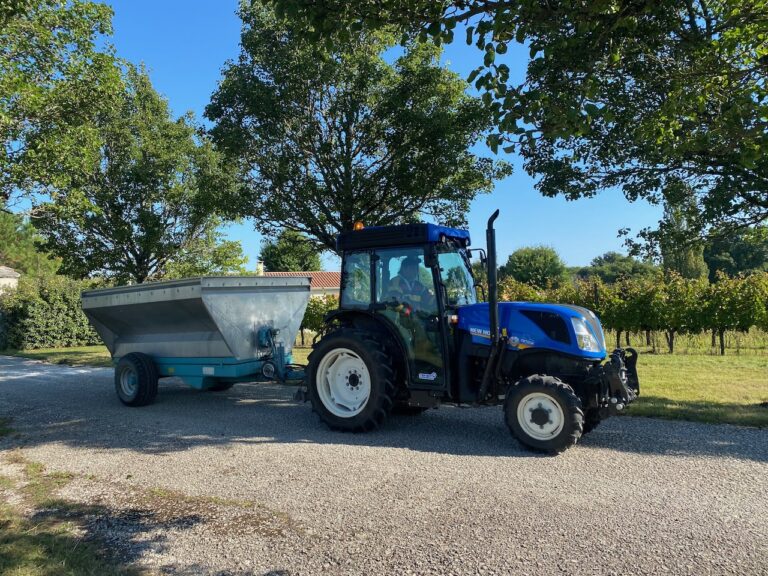
Bringing back some white grapes from the neighbouring plots we’ve leased.
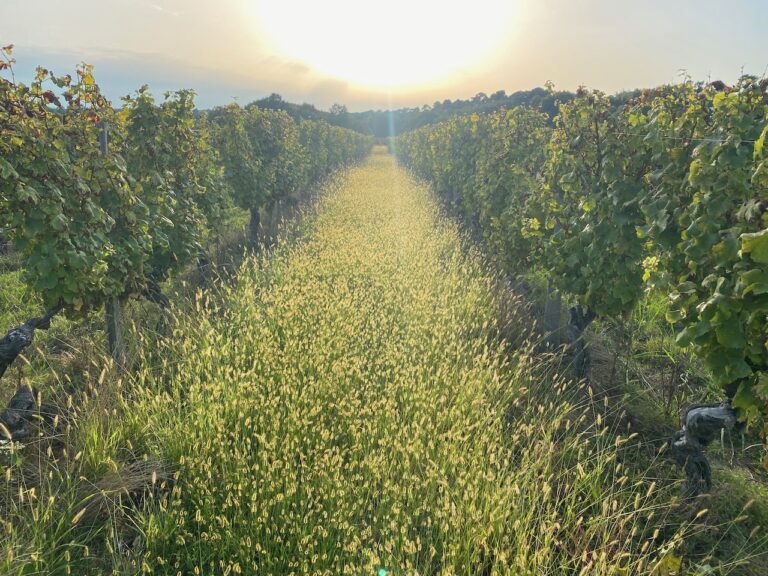
Les Trois Hectares the evening before harvest.
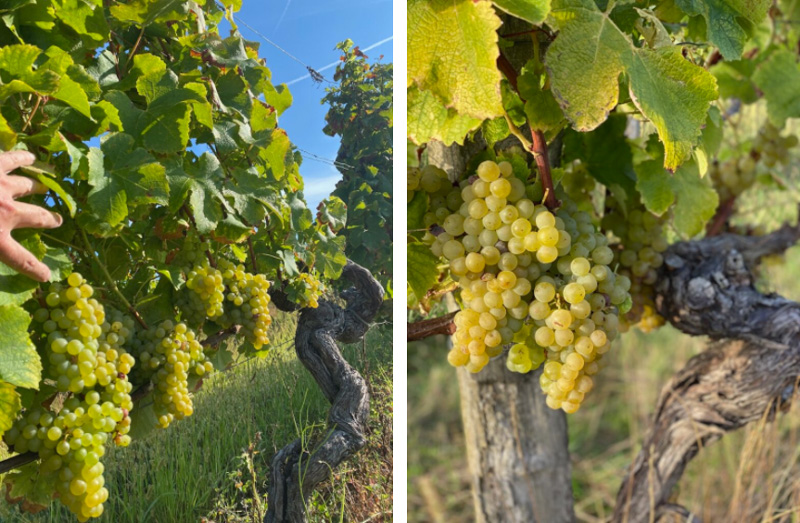
Old vine Sémillon.
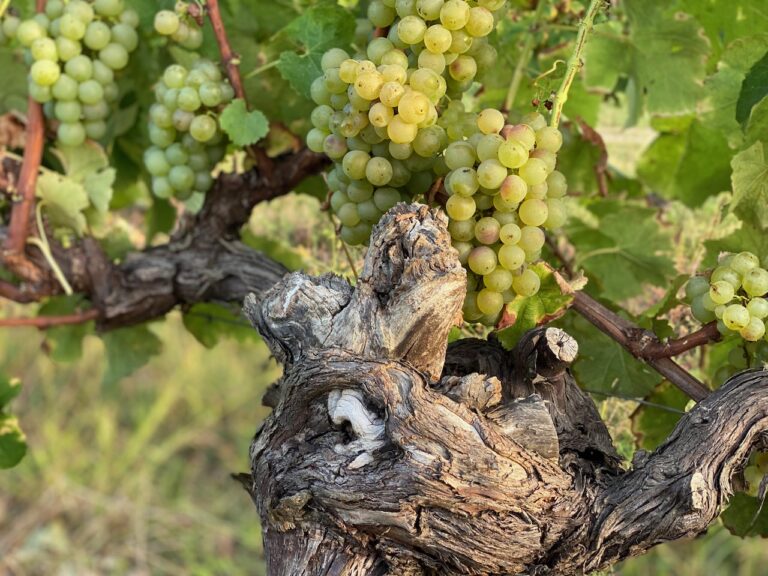
The older vines were planted in 1947.
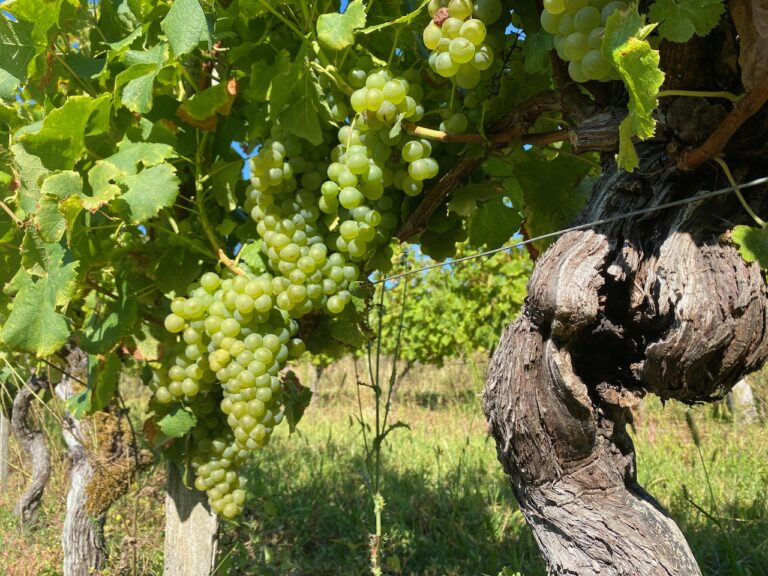
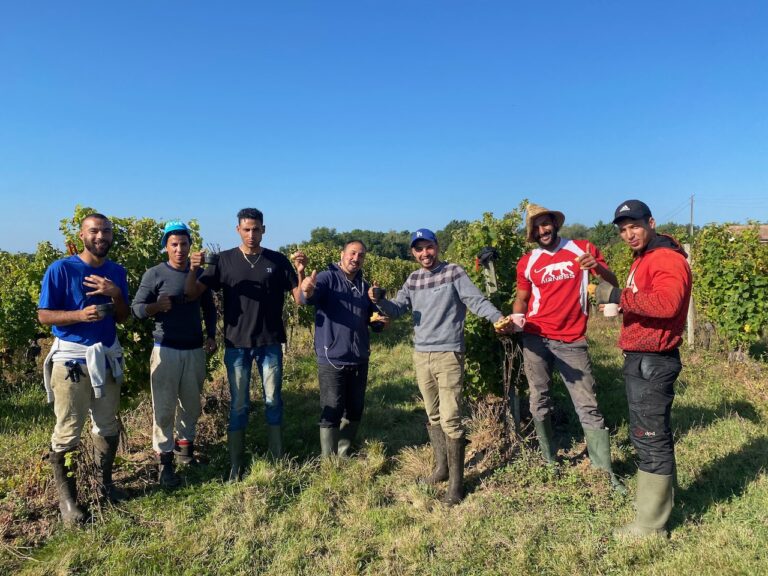
The Moroccan lads trimmed away the few blemishes from the old Sémillon the day before last Saturday’s harvest. Chocolatine and coffee break.
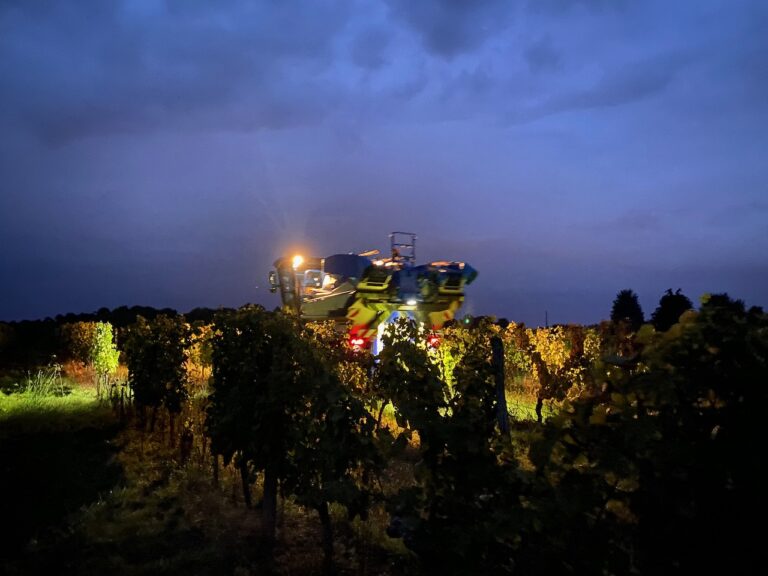
Gently does it. Saturday 25 September.
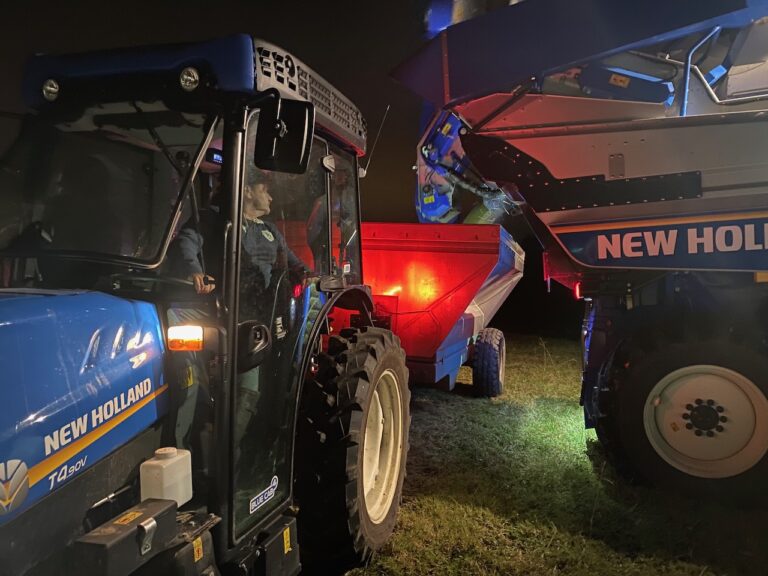
6am start. Nice and cool.
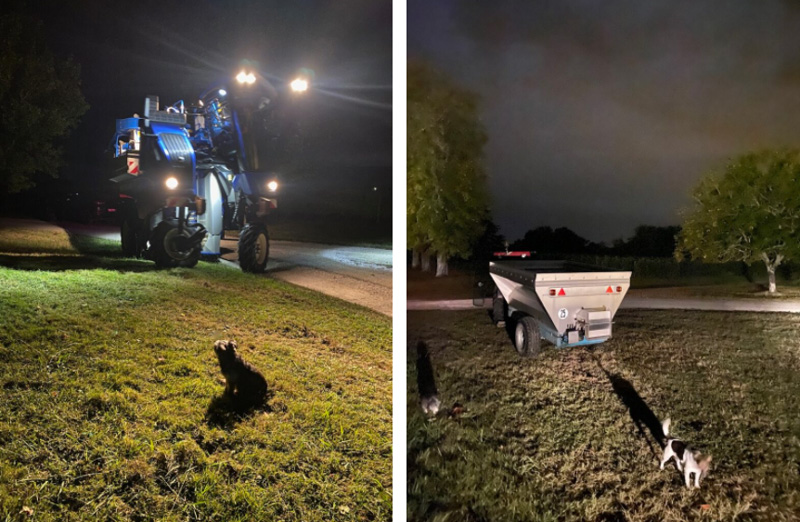
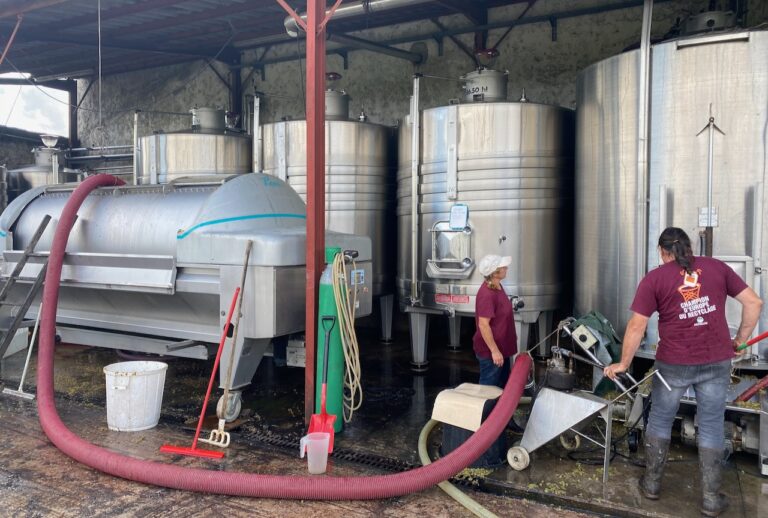
The last of the Sémillon came in on Sunday 26th.
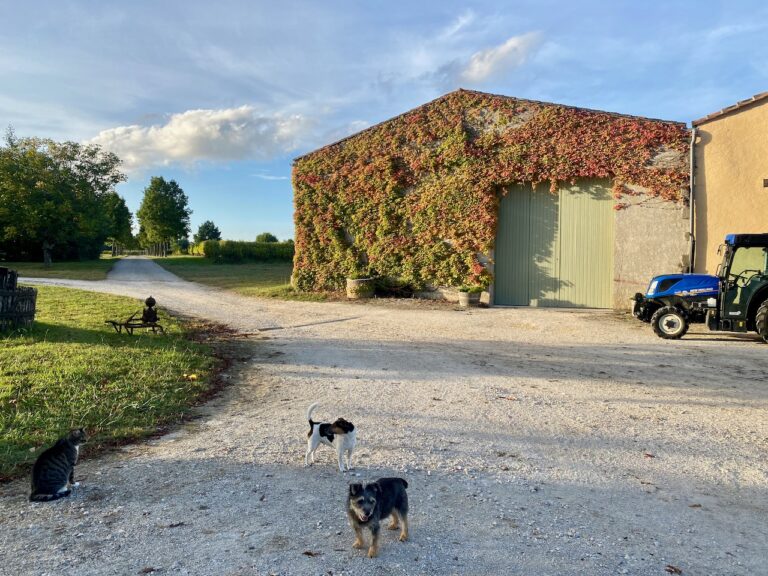
Autumn settling in and time to start the reds for making rosé.
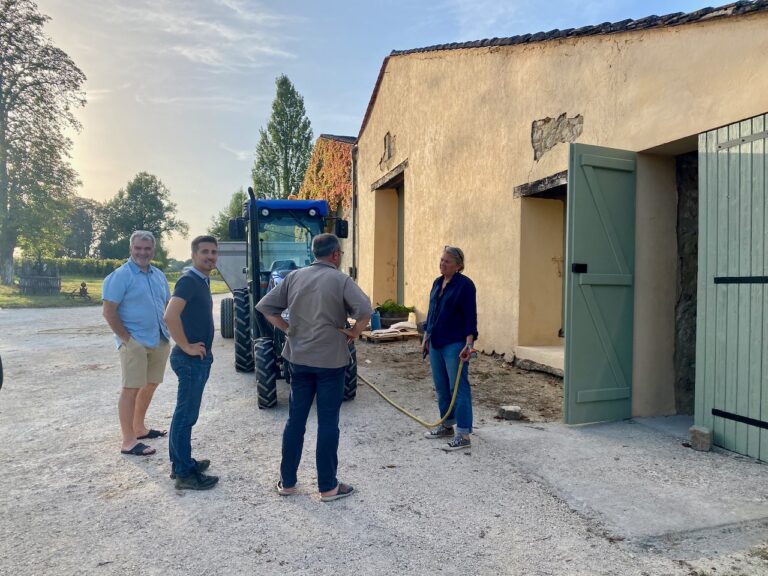
A short pause for the machine harvesters before another busy week.
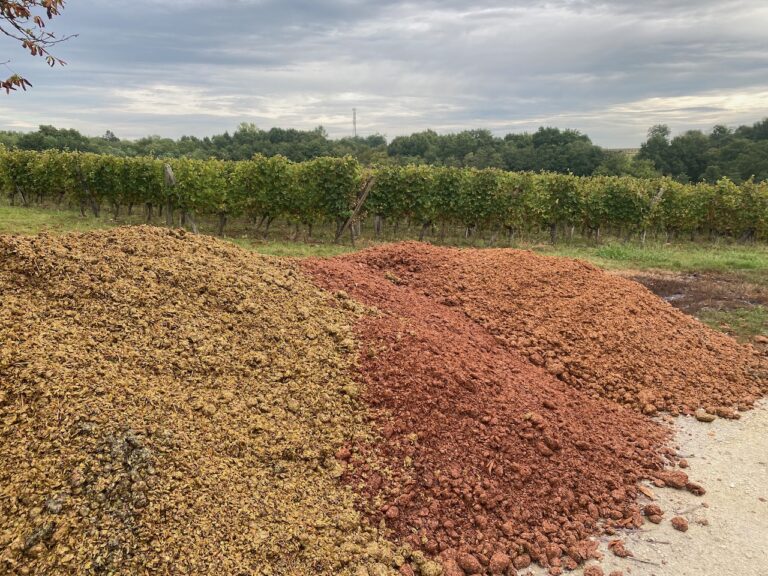
A few pressed grape skins, to be collected.
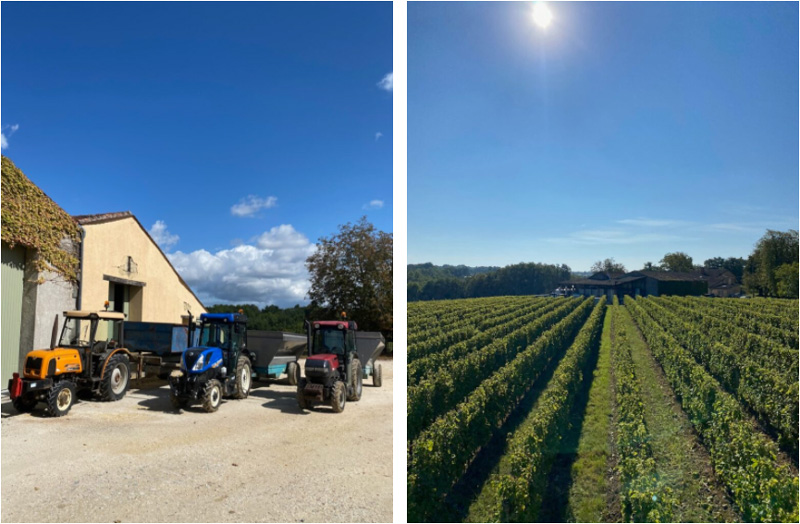
And now for the rosé. And with heavy rain forecasted for this coming Sunday 3 October, we might just be busy before then.
Thanks for reading to the end!
Do leave a comment or question on the blog post here. It’ll help to get things right in future.
There’s a nifty little ‘comment’ icon to the side of the article, making it easy to find the right place.
Any issues, email us at team@bauduc.com.

